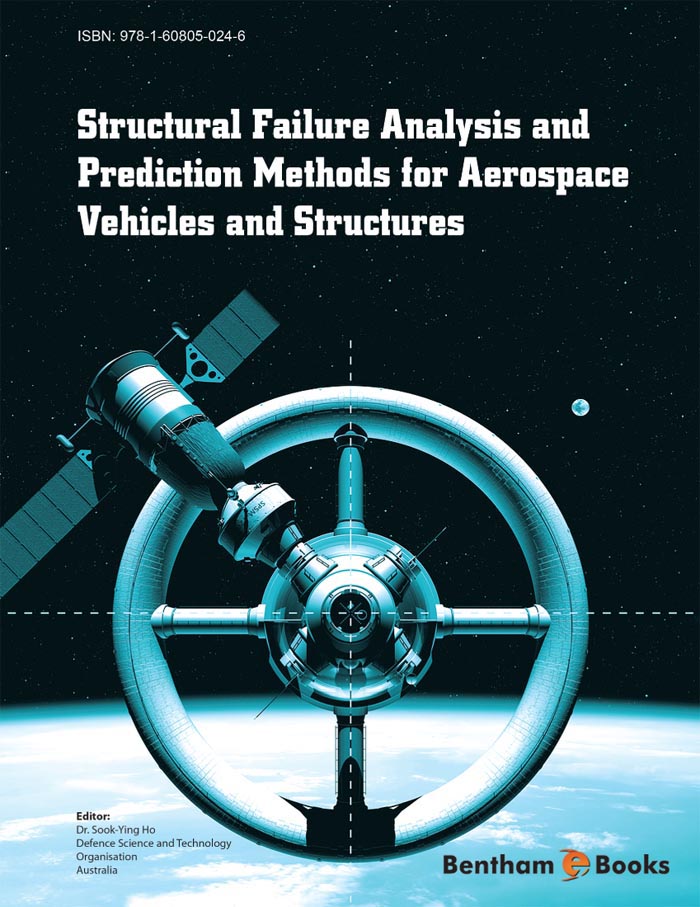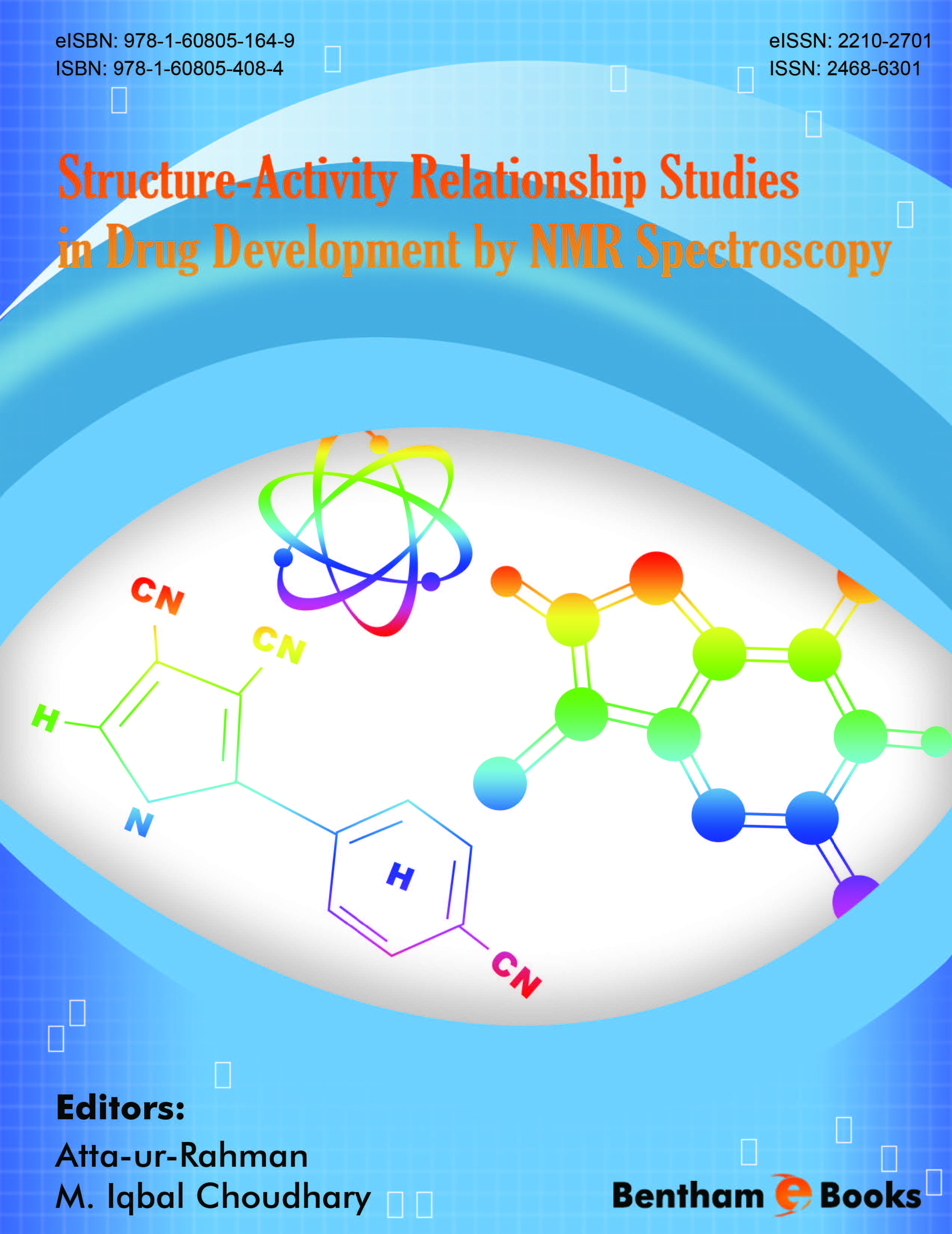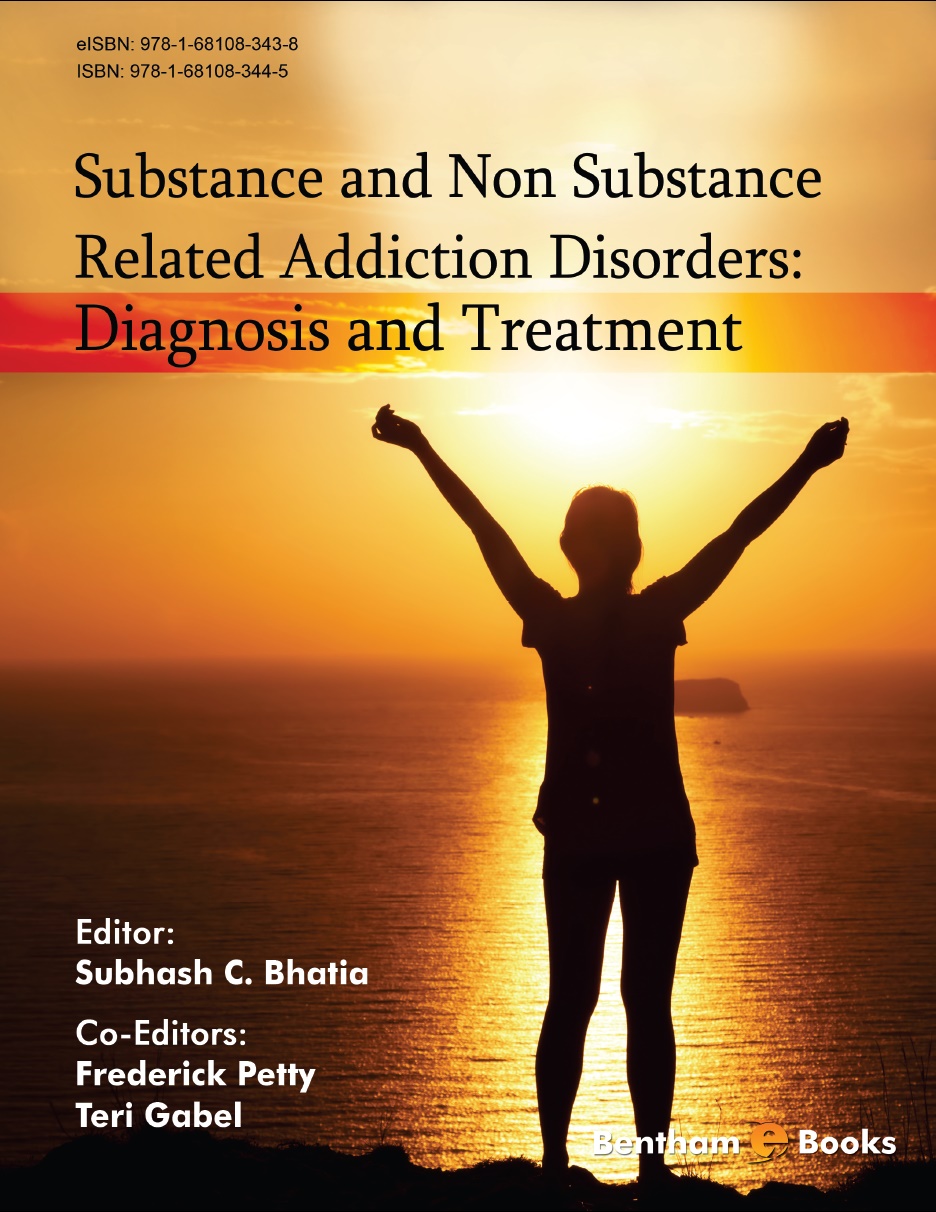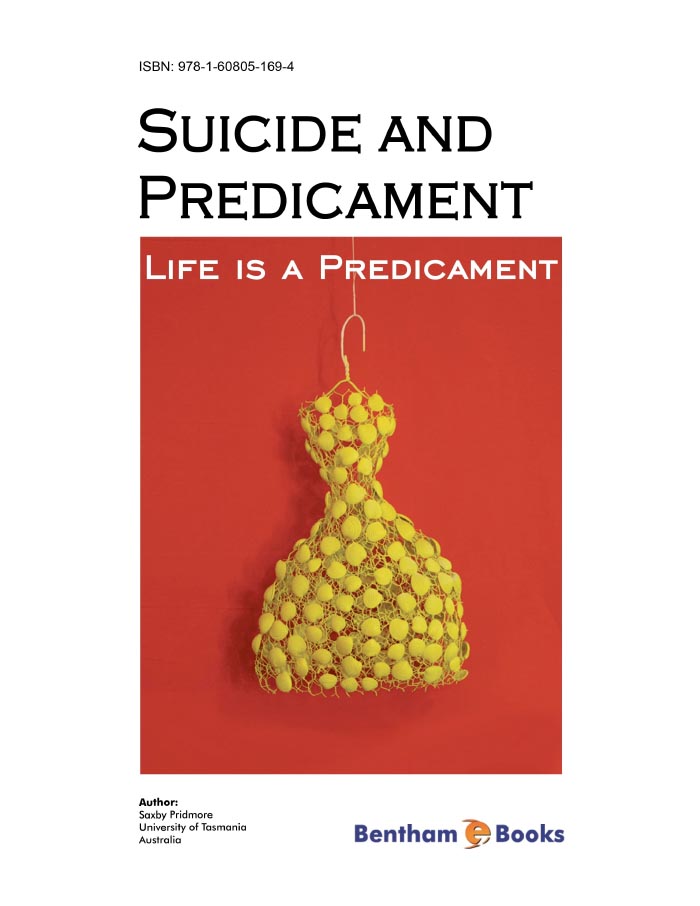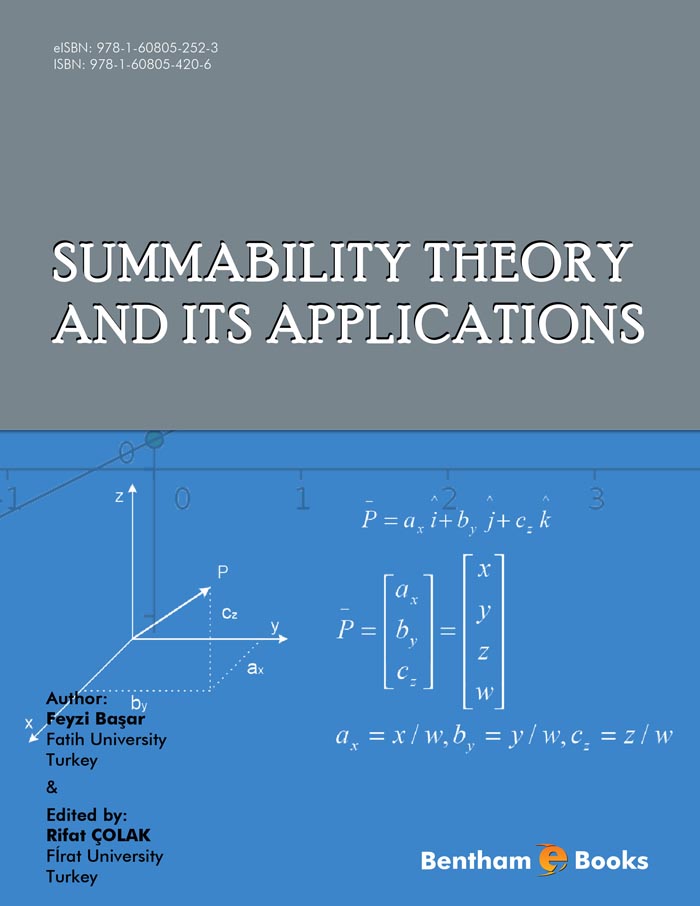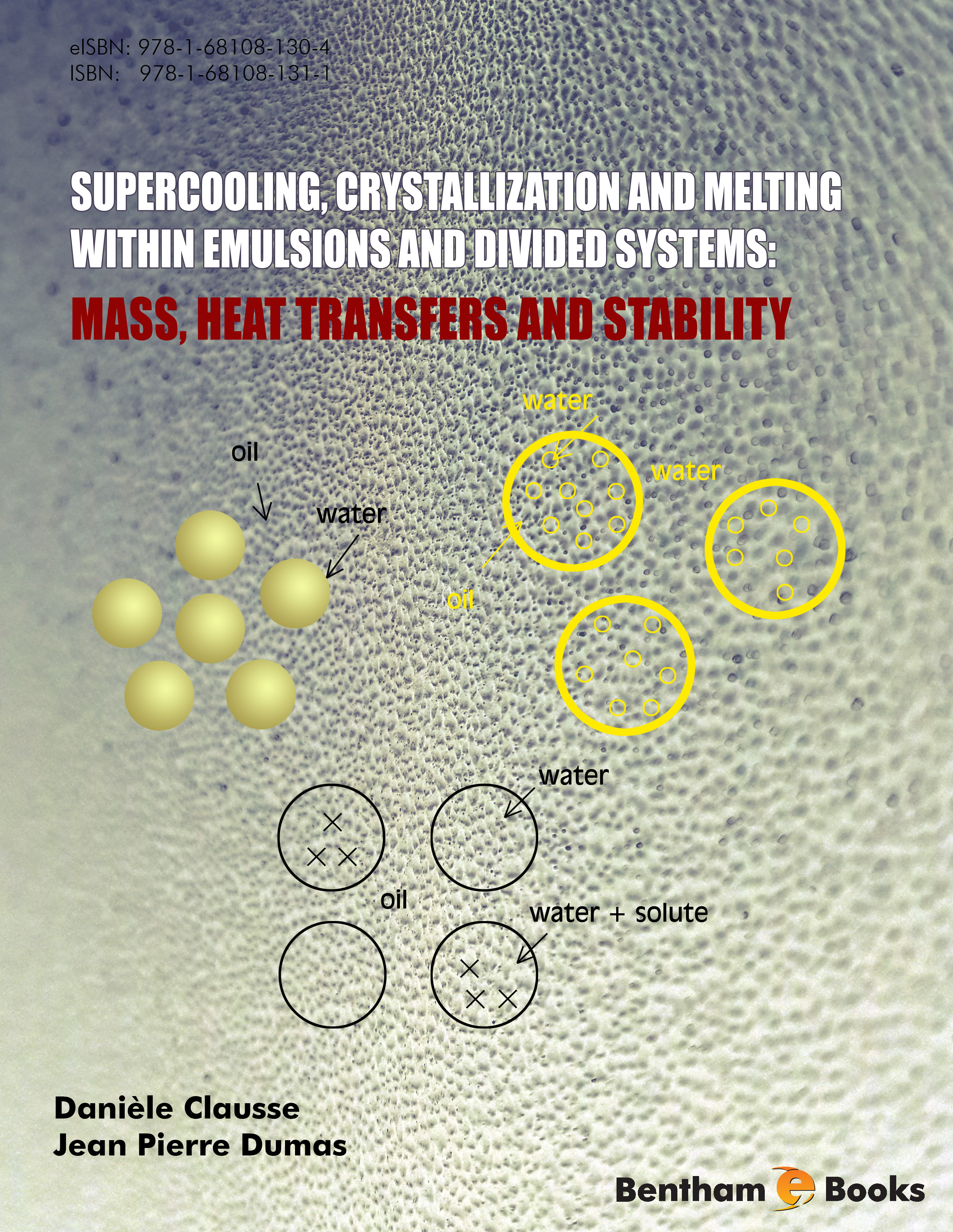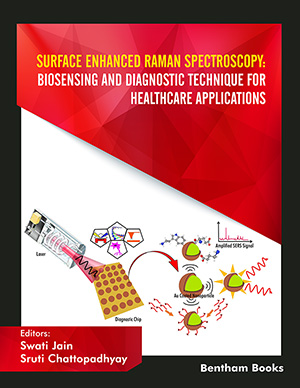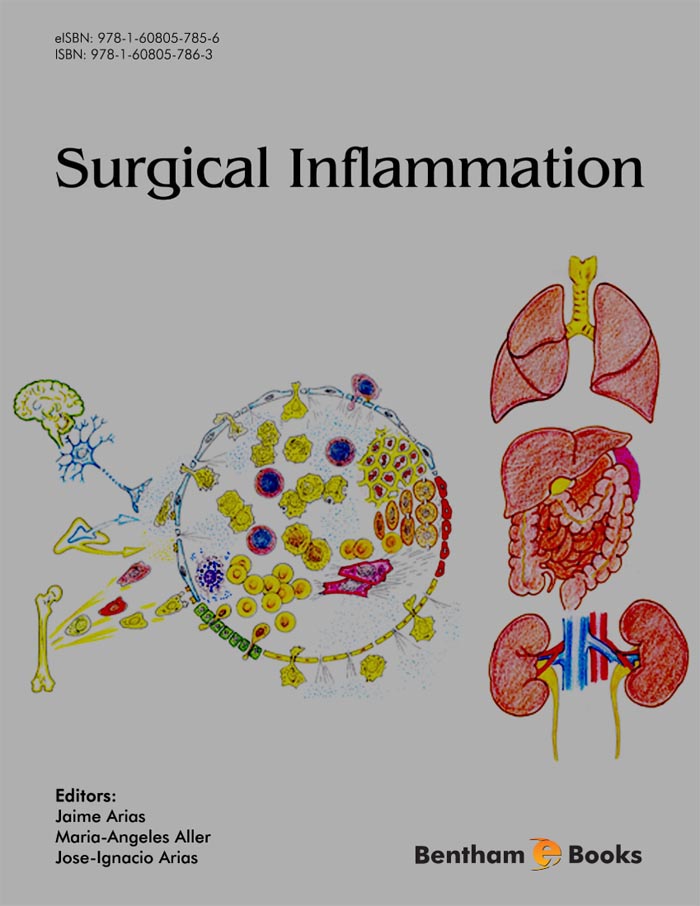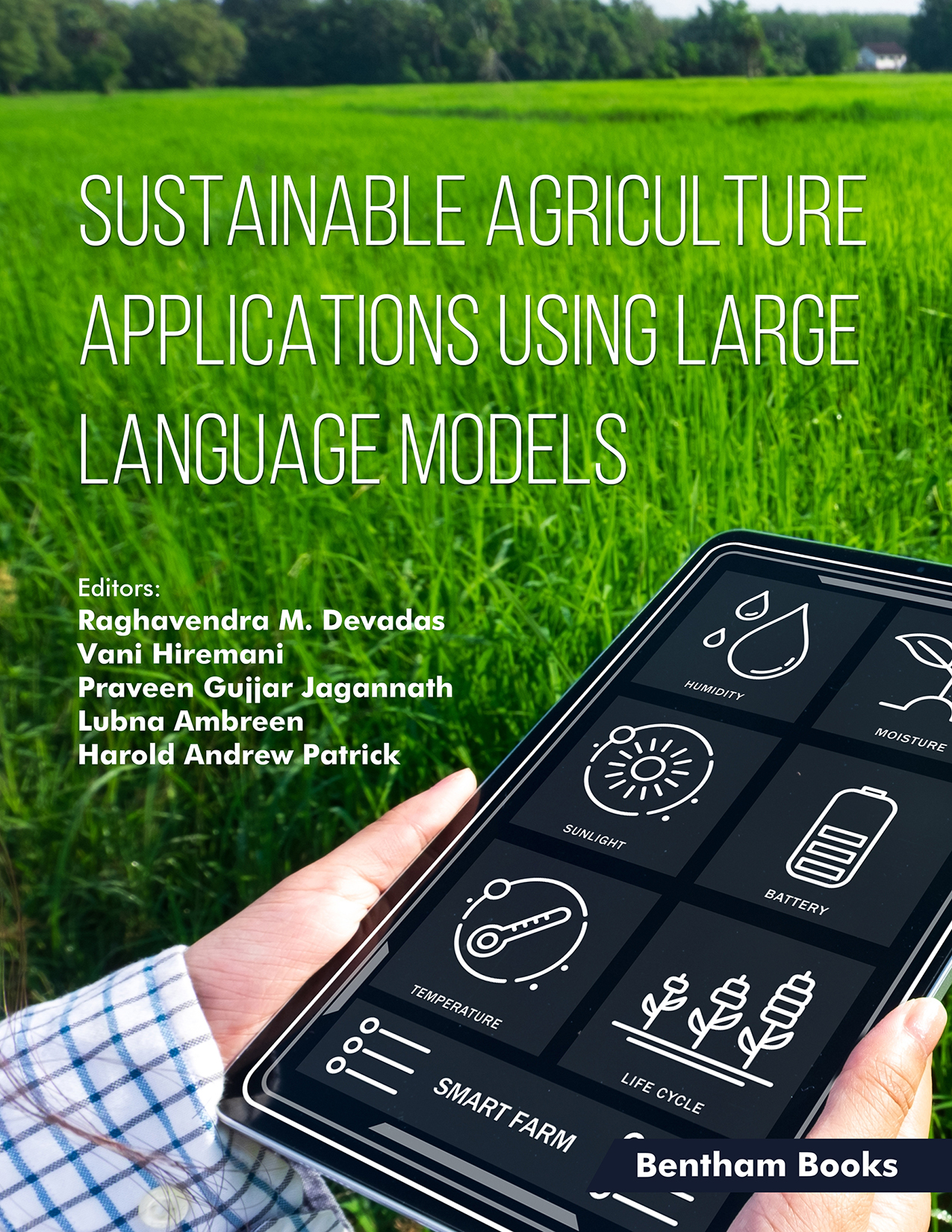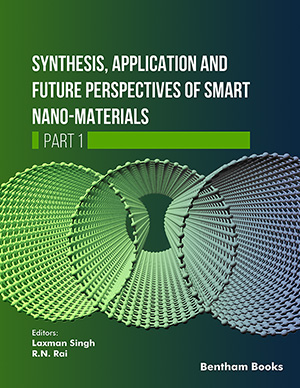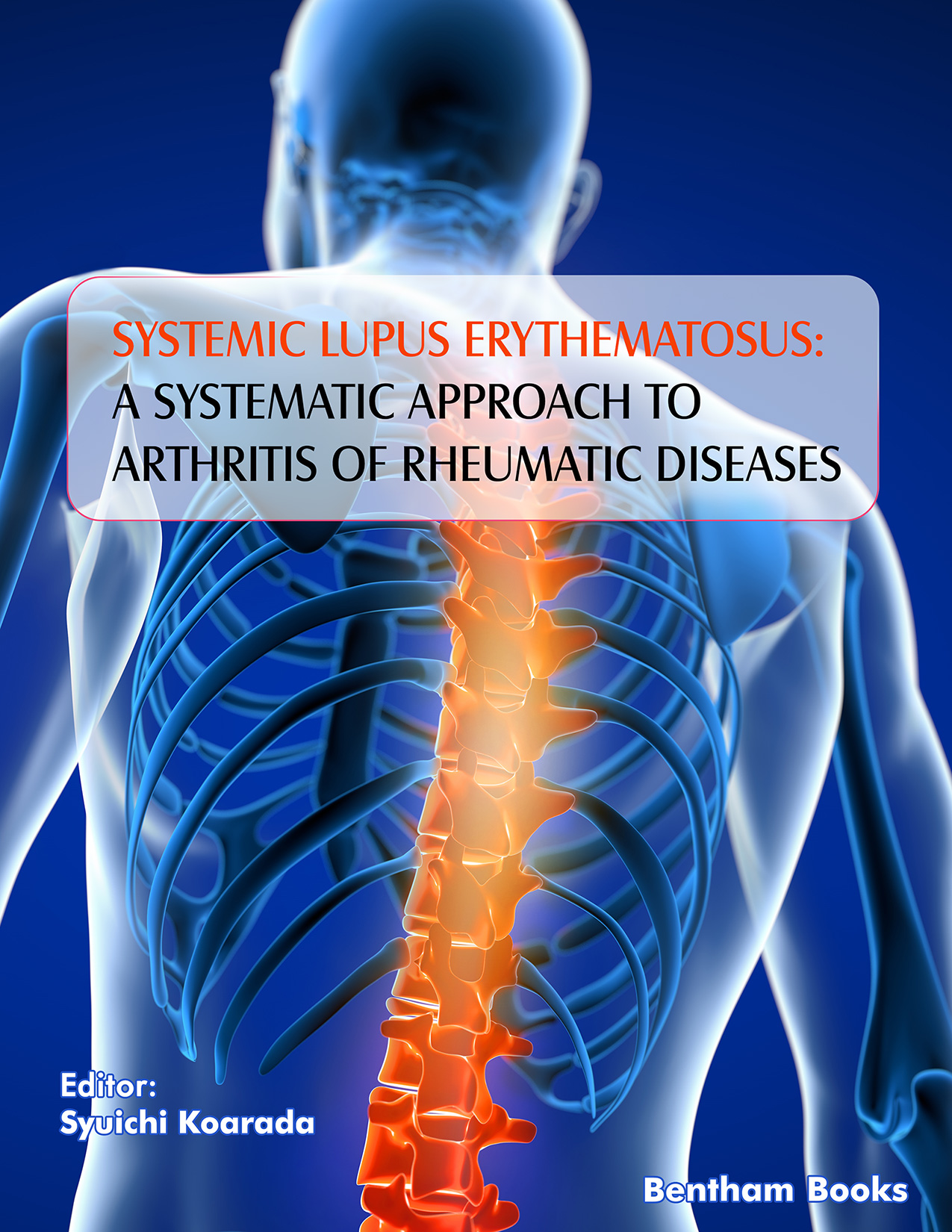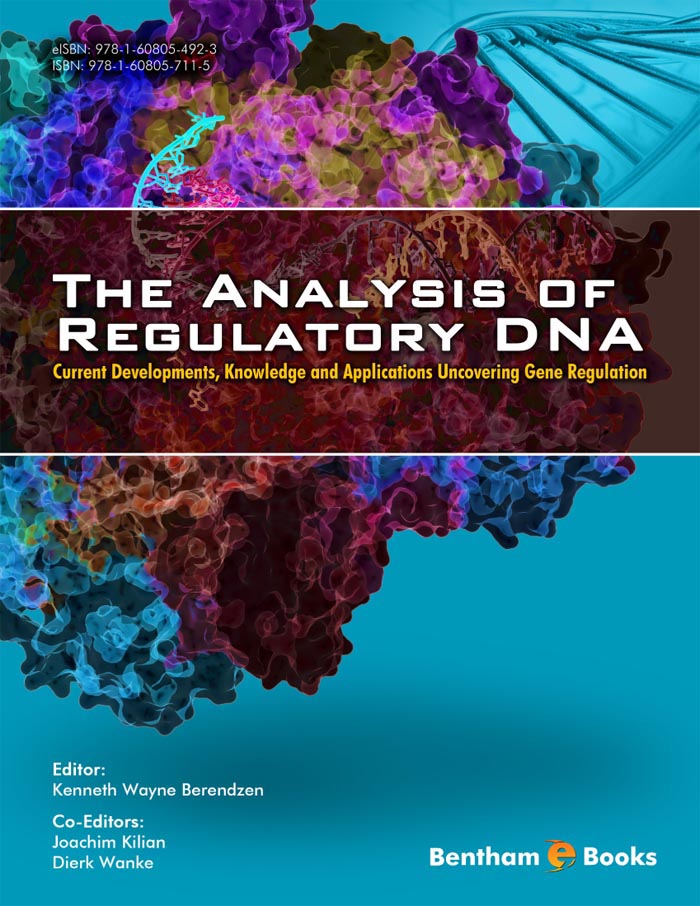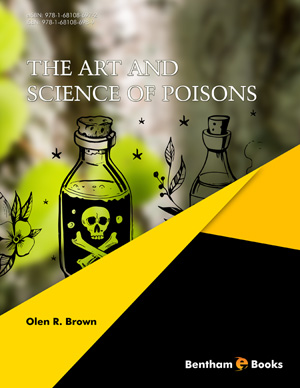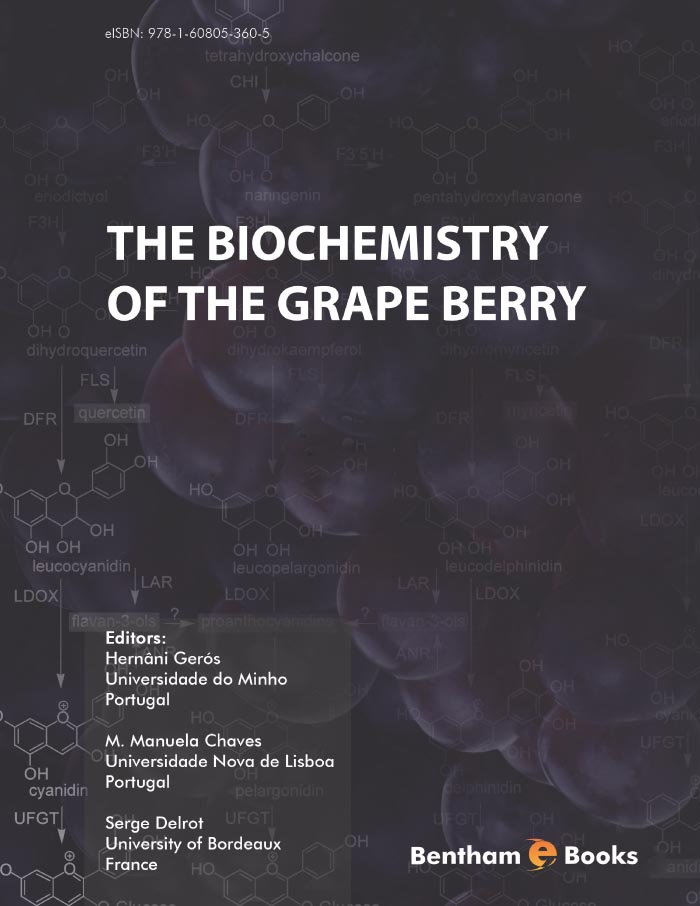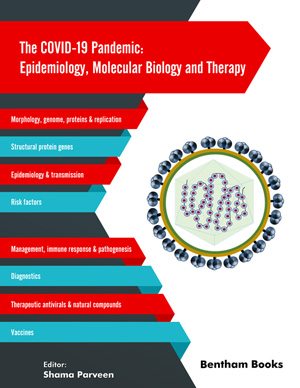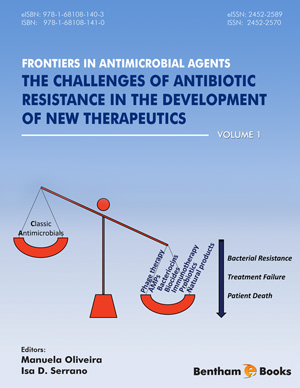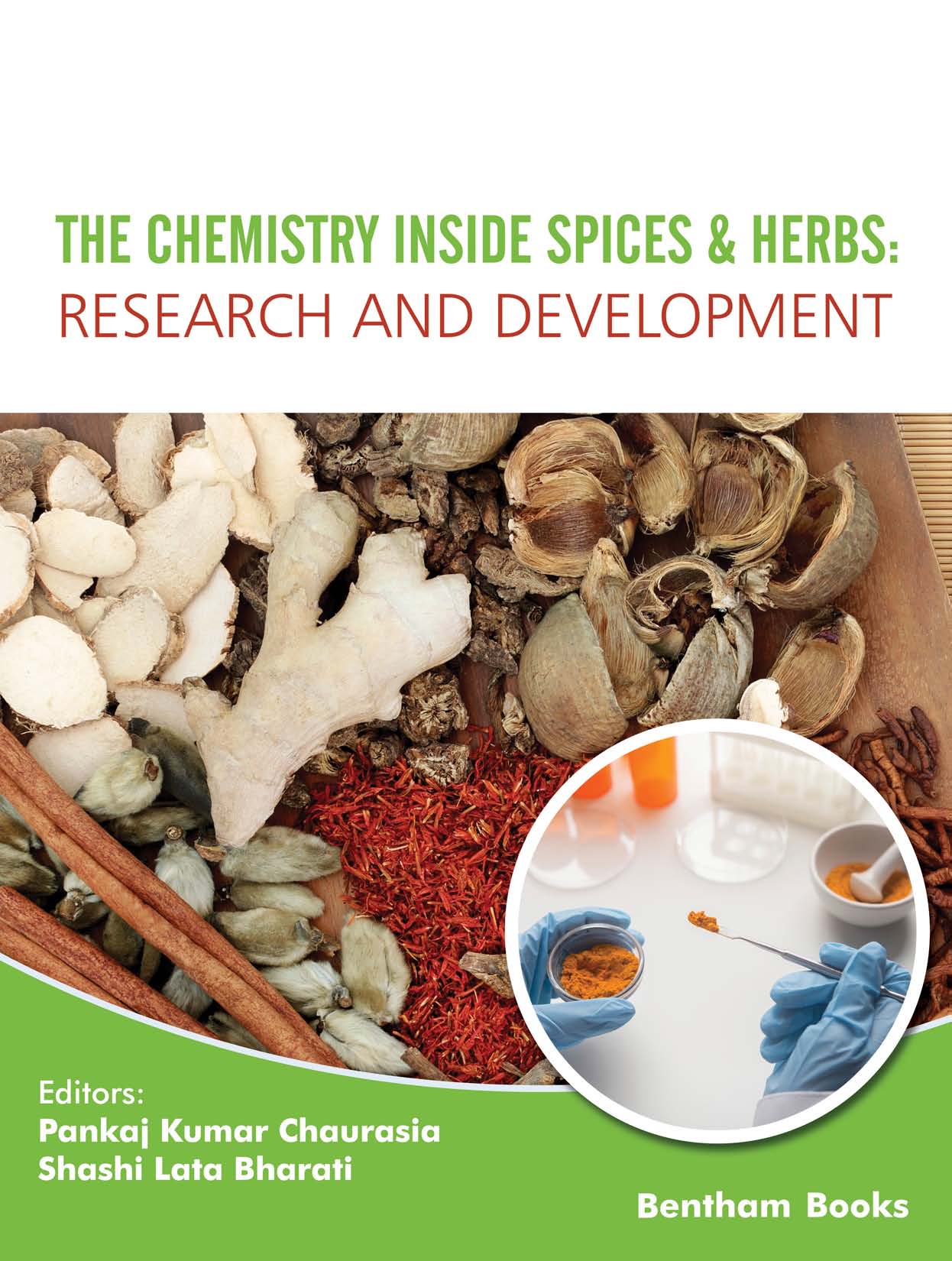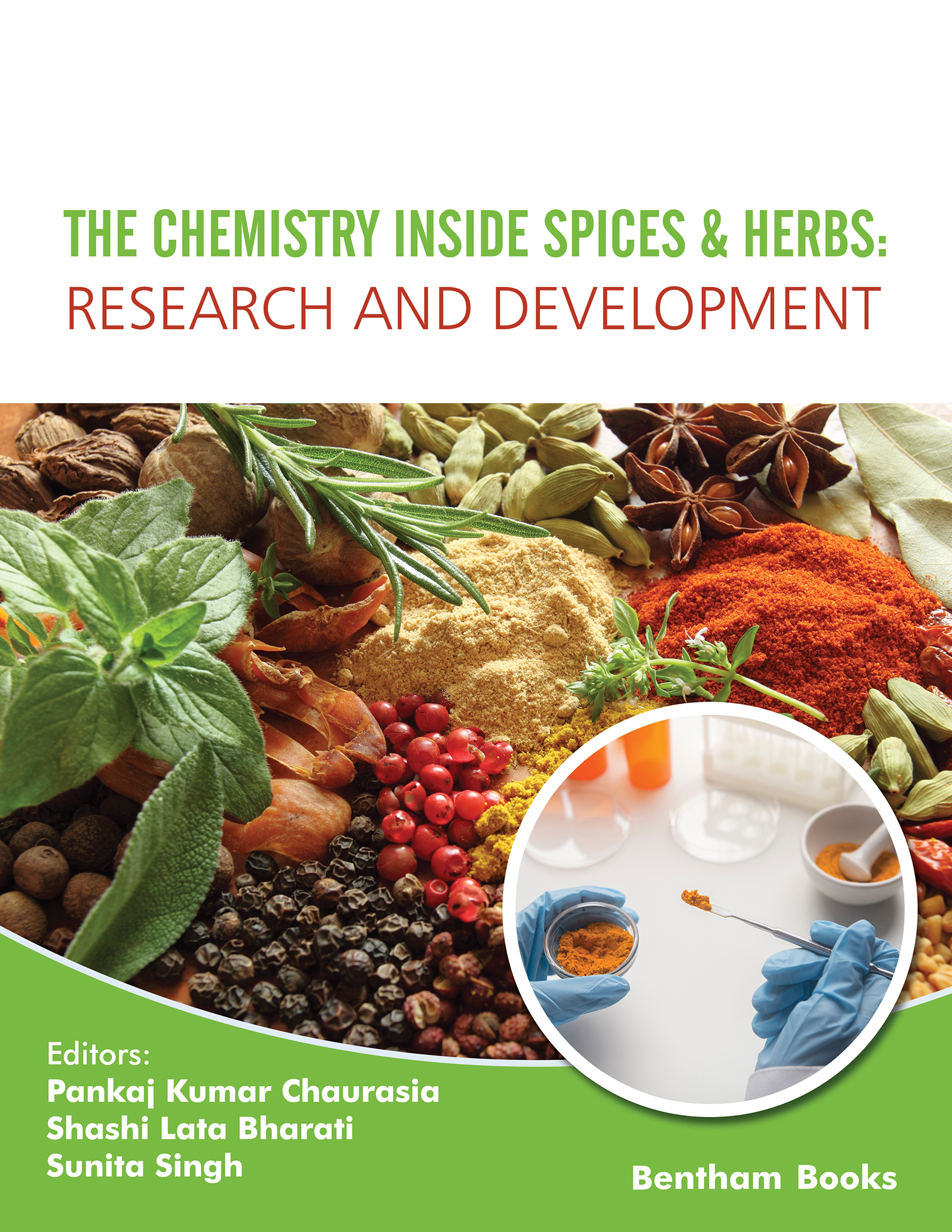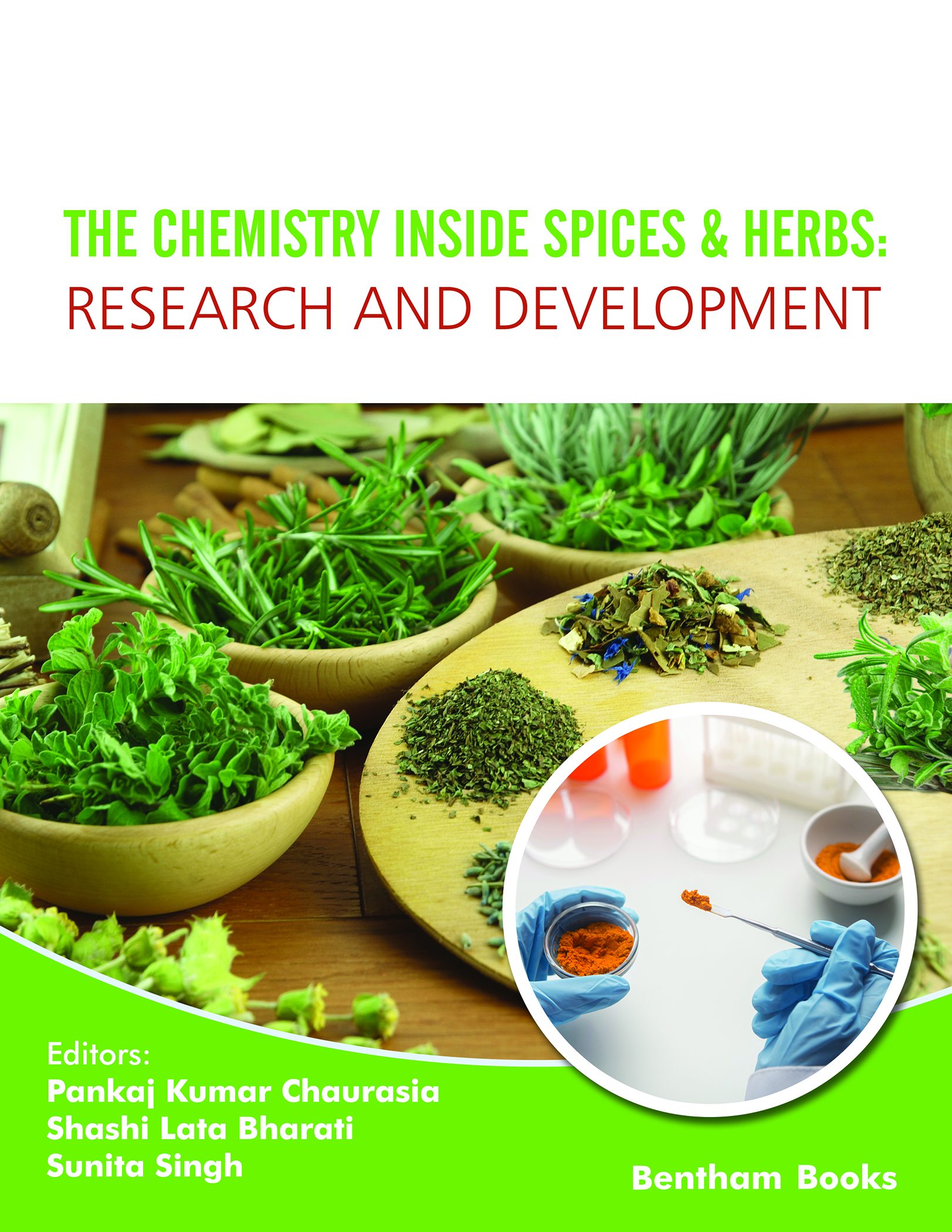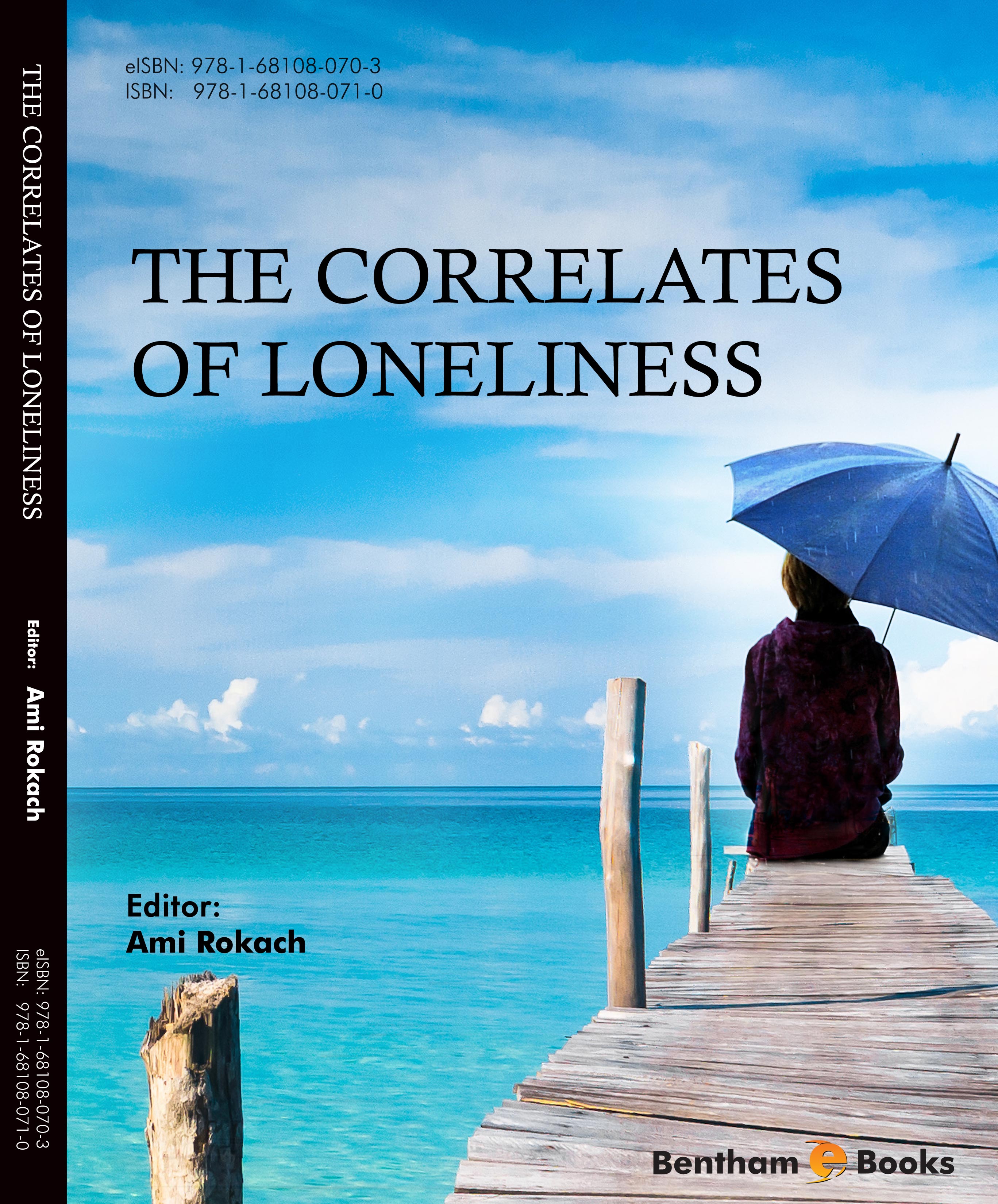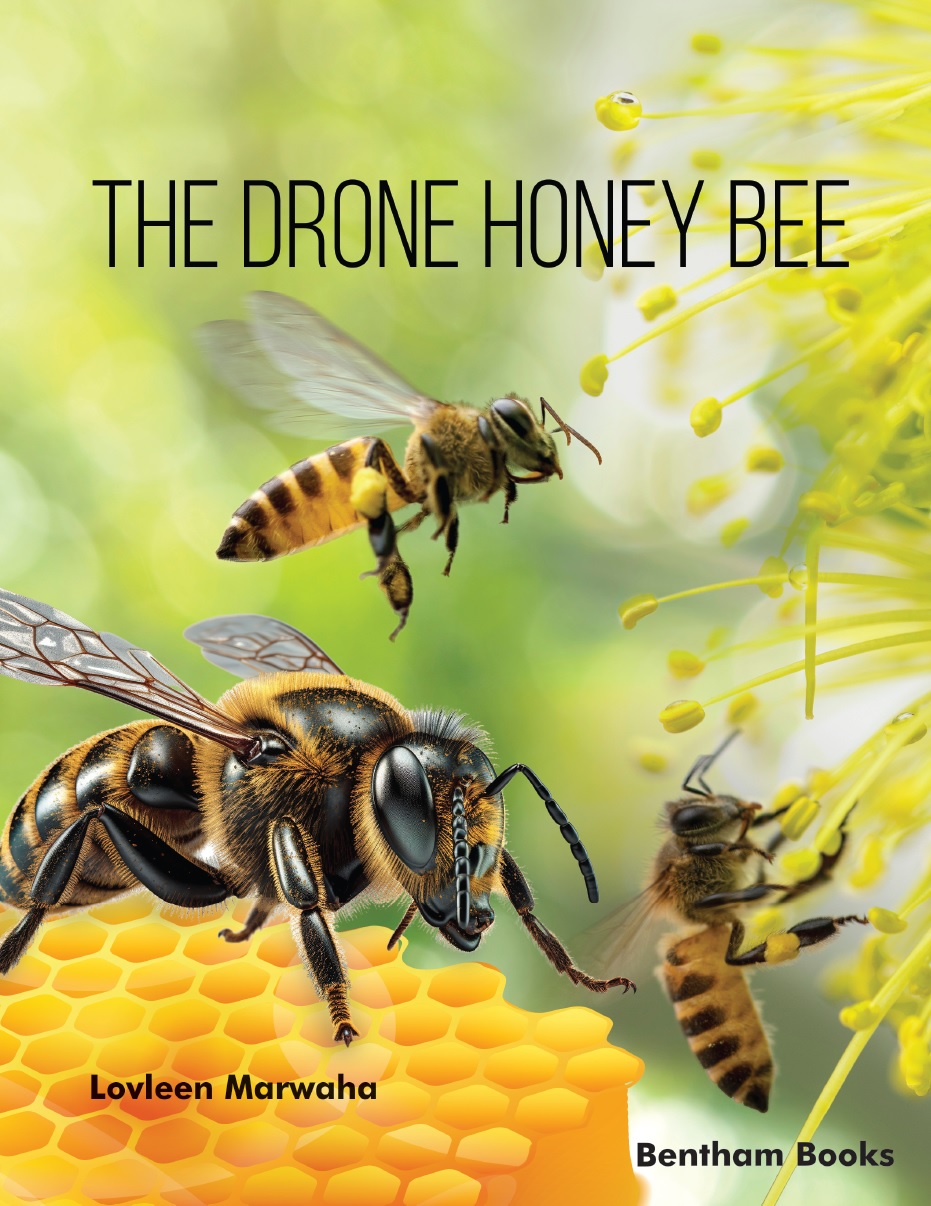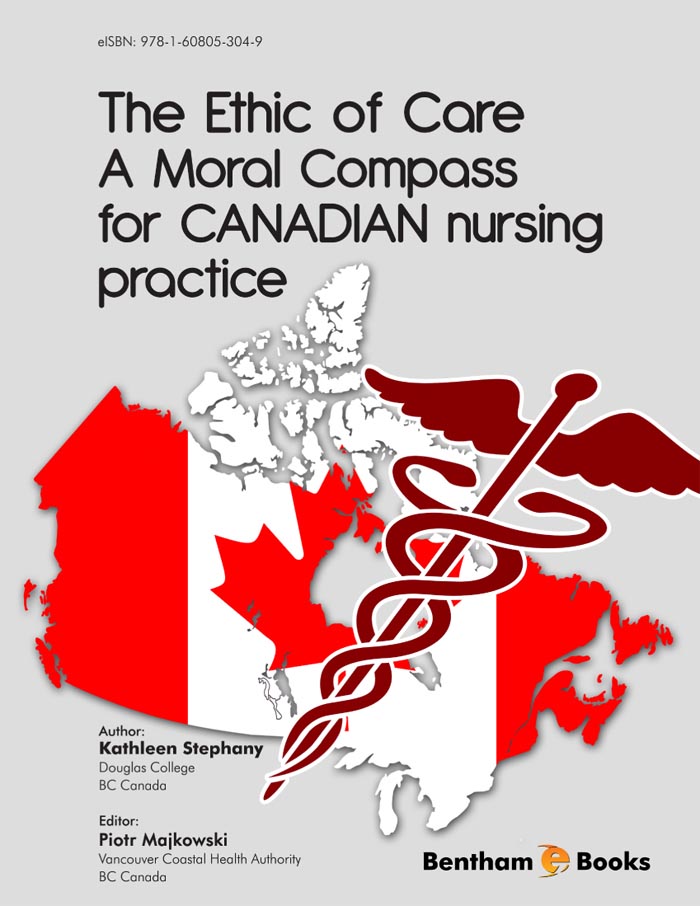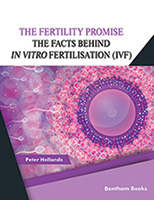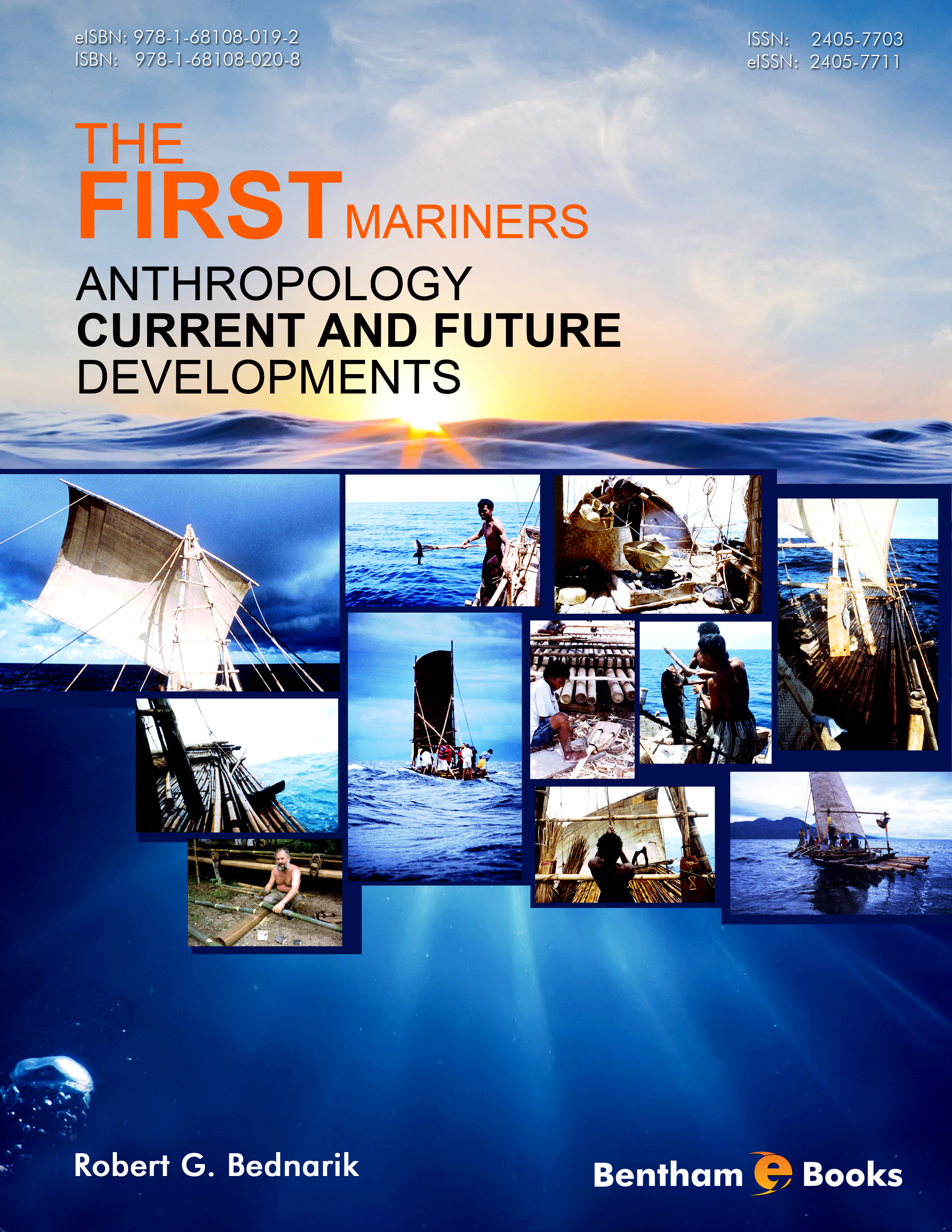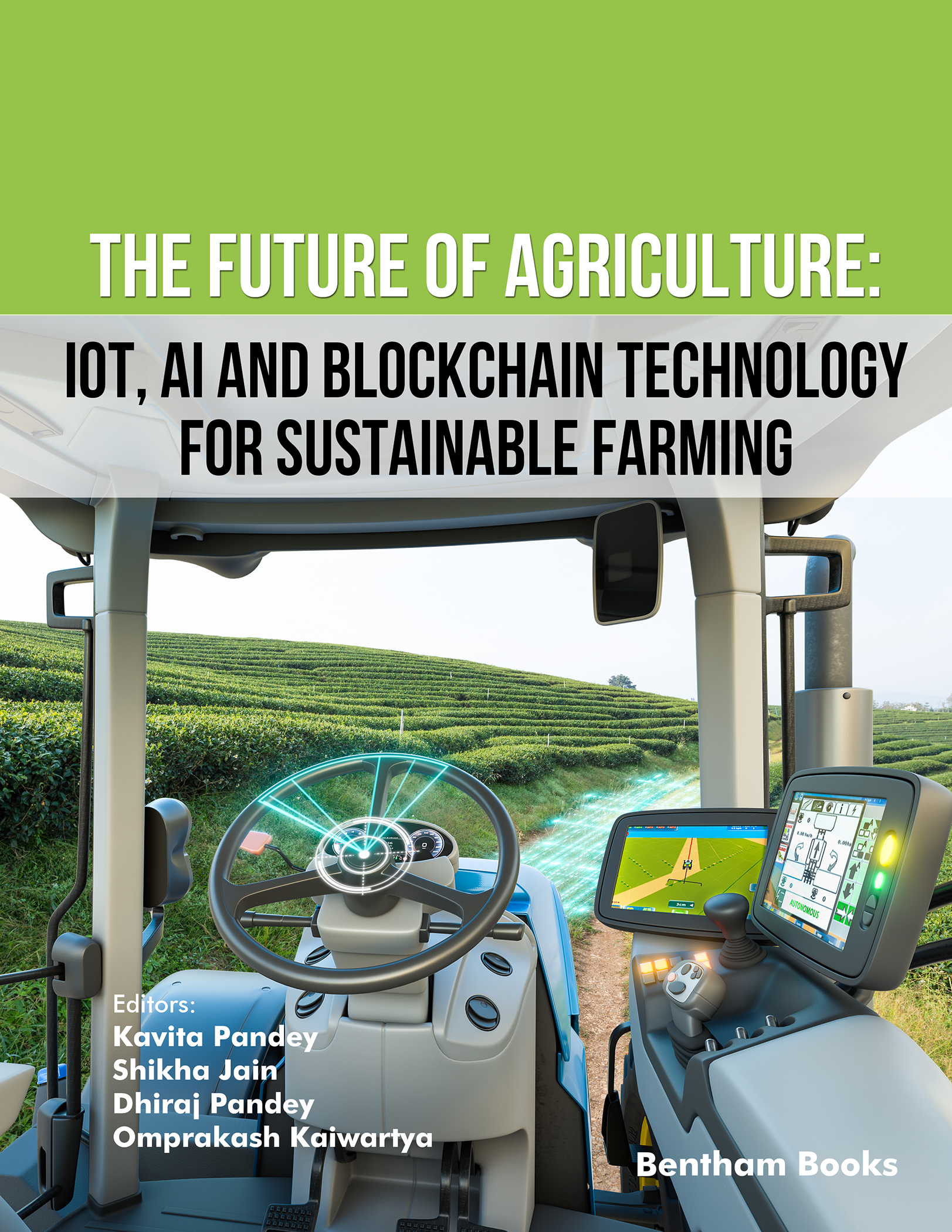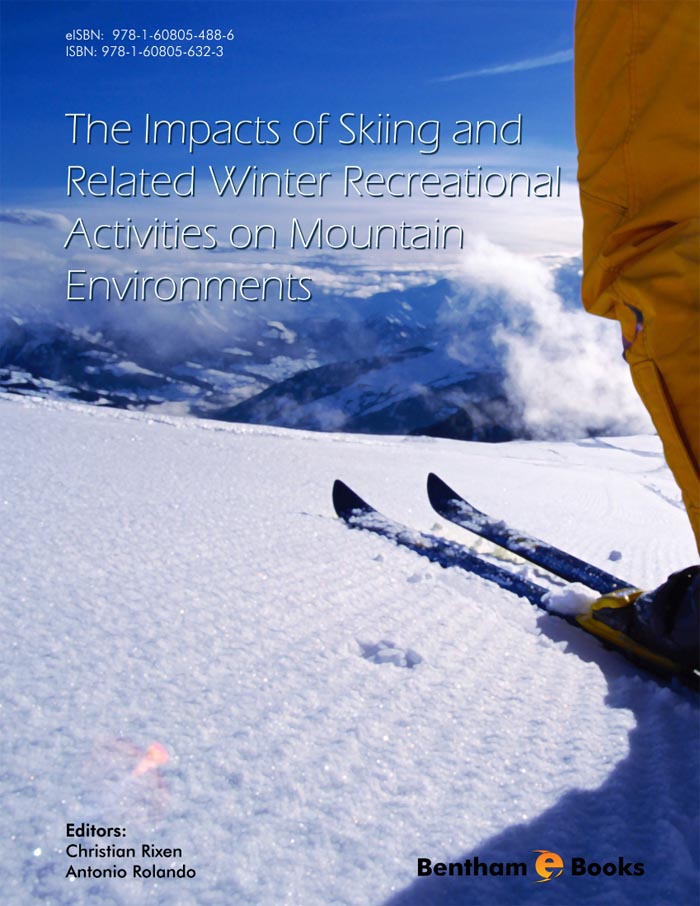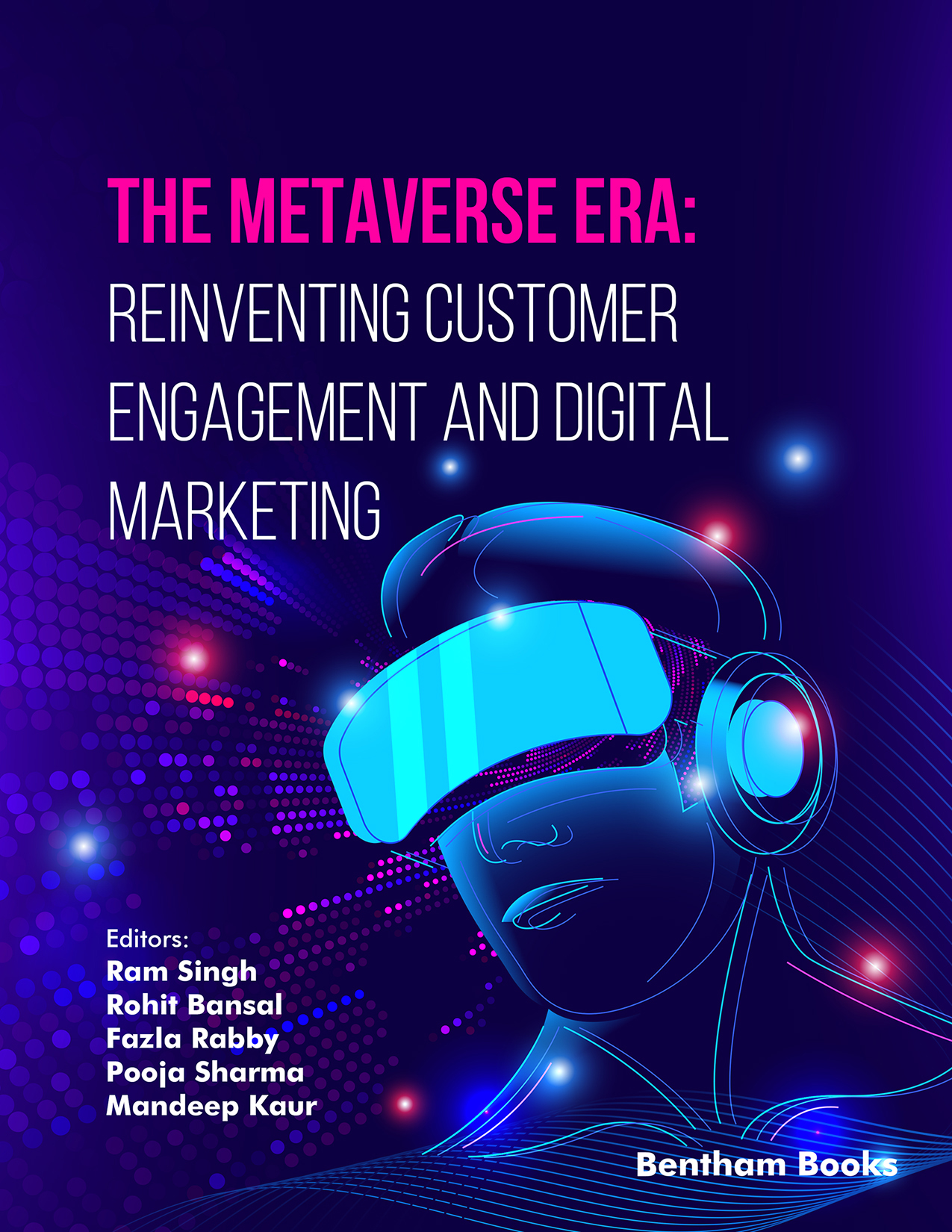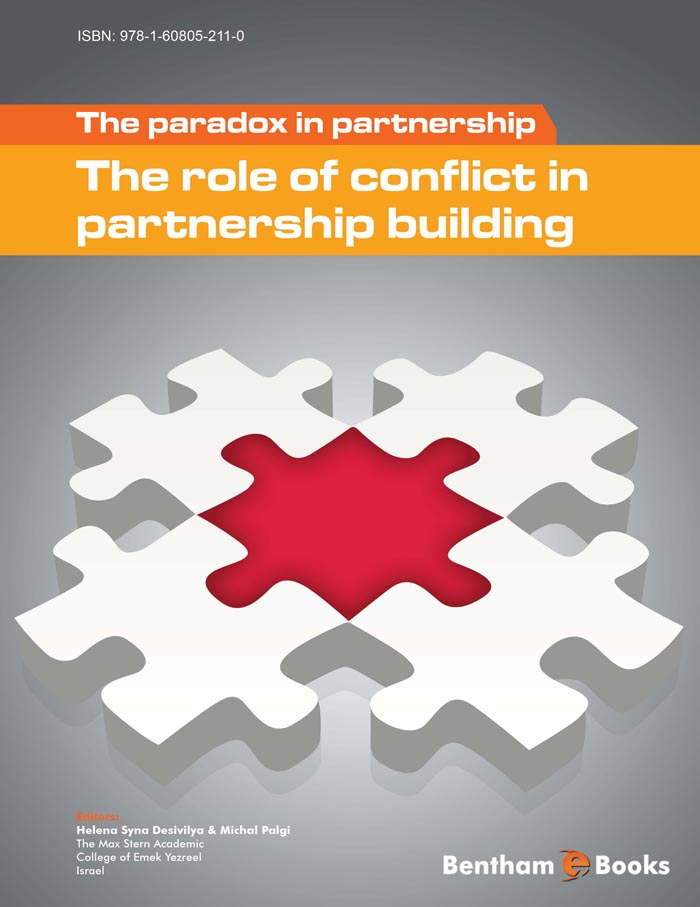Bentham Science Publishers
Bentham Science Publishers is a major publisher of more than 100 peer-reviewed science, technology and medical (STM) journals, along with a rapidly growing collection of eBooks. Since 1993, Bentham Science Publishers has been catering to the information needs of the pharmaceutical, engineering, biomedical and medical research community.1601 - 1700 of 1824 results
-
-
Stochastic Lagrangian Modeling for Large Eddy Simulation of Dispersed Turbulent Two-Phase Flows
More LessUnderstanding the dispersion and the deposition of inertial particles convected by turbulent flows is a domain of research of considerable industrial interest. Inertial particle transport and dispersion are encountered in a wide range of flow configurations, whether they are of industrial or environmental character. Conventional models for turbulent dispersed flows do not appear capable of meeting the growing needs of chemical, mechanical and petroleum industries in this regard and physical environment testing is prohibitive. Direct Numerical Simulation (DNS) and Large Eddy Simulation (LES) have become powerful tools for the investigation of particle-laden turbulent flows with the help of advances in computing resources. The hybrid Eulerian-Lagrangian approach plays a key role in predicting inertial particle dispersion and deposition. This ebook explains the use of stochastic tools to enhance the accuracy of the Eulerian-Lagrangian large eddy simulation of particle-laden turbulent flows of practical interest. The book should be a useful resource for chemical, mechanical, petroleum and environmental engineering postgraduates and researchers interested in applying tractable yet powerful numerical tools to solve problems involving multiphase flows.
-
-
-
Stress Response and Immunity: Links and Trade Offs
More LessWhen environmental conditions deviate from the optimal range, stress ensues. Stress response is a set of reactions that allow the organism to adjust and survive adverse conditions. Stress can be physical, such as extreme temperature, radiation, injury, or psychological, caused by perceived danger or deprivation. Every living cell has biochemical mechanisms to cope with physical stress. These mechanisms show a degree of similarity among several types of living organisms.
Stress Response and Immunity: Links and Trade Offs explores the functional and evolutionary connections between stress response and immunity. The book introduces the reader to the concept of stress and subsequently examines the connection between stress response and immunity at various evolutionary stages of living organisms - from bacteria to humans. The book also features chapters dedicated to the role of tumor suppressor genes and the immune system of the brain.
The information presented in this reference demonstrates the profound effects of physical and psychological stress on human health. Readers with basic knowledge of molecular biology will learn about the interesting facets of stress responses and the evolutionary trade offs observed in different life forms.
-
-
-
Structural Failure Analysis and Prediction Methods for Aerospace Vehicles and Structures
More LessThis book deals with structural failure (induced by mechanical, aerodynamic, acoustic and aero-thermal, loads, etc.) of modern aerospace vehicles, in particular high-speed aircraft, solid propellant rocket systems and hypersonic flight vehicles, where structural integrity, failure prediction and service life assessment are particularly challenging, due to the increasingly more demanding mission requirements and the use of non-traditional materials, such as non-metallic composites, in their construction. Prediction of the complex loading environment seen in high-speed operation and constitutive / fracture models which can adequately describe the non-linear behaviour exhibited by advanced alloys and composite materials are critical in analyzing the non-linear structural response of modern aerospace vehicles and structures. The state-of-the-art of the different structural integrity assessment and prediction methodologies (including non-destructive structural health monitoring techniques) used for the structural design, service life assessment and failure analysis of the different types of aerospace vehicles are presented. The chapters are written by experts from aerospace / defence research organizations and academia in the fields of solid mechanics, and structural mechanics and dynamics of aircraft, rocket and hypersonic systems. The book will serve as a useful reference document containing specialist knowledge on appropriate prediction methodologies for a given circumstance and experimental data acquired from multi-national collaborative programs.
-
-
-
Structure-Activity Relationship Studies in Drug Development by NMR Spectroscopy
More LessDrug discovery is still a process which involves screening of a large number of chemical compounds against a defined biological target. However, this approach is now being gradually replaced by more rational and knowledge-based approaches, such as in sillico screening and target based drug development. Increase in the cost of development of NME (New Molecular Entities) and productivity crises in pharmaceutical industry are catalyzing this change.
Spectacular advances in the field of use of NMR spectroscopy in drug discovery and development have been triggered by a greater understanding of the disease process at the molecular level.
While NMR is generally valued as an important tool for structure determination and more recently as a non-invasive diagnostic technique, its potential in drug discovery is based on its capacity to map molecular interactions at the atomic level. Chemical shifts, cross relaxation, and exchange of protons are among the NMR parameters which are highly sensitive to the exact molecular environments , and therefore yield information about how a small molecule (candidate compound) binds to a target protein (receptor) or to other macromolecules. These NMR parameters are also used to exactly map the part of the macromolecular target to which the ligand is bound. As a result, NMR is now extensively used as an efficient tool in the drug (ligand) discovery and optimization process or for the assessment of target drug ability. Recent advances in NMR hardware and methodology have provided a fresh impetus in the area of pharmaceutical innovation and productivity. This book is aimed to present recent cutting edge knowledge, practices and experiences in this important field.
The book comprises seven scholarly written articles . Mailavaram and Devarakonda in their introductory review skillfully summarize the broad approaches of NMR-based drug discovery . Park and Kim focus on the use of NMR spectroscopic techniques in the study of drug delivery, drug release and other pharmaceutic parameters. Roberto and Marina provide a chronological account of fragment-based drug discovery by using NMR-based screening methods. Specific utilization of NMR-based techniques in the discovery and development of anticancer drugs is reviewed by Solomon and Lee. Ramalho et al. review another fascinating application of NMR in understanding the behavior and radio sensitizing properties of bioreductive drugs. Zoppetti comprehensively reviews the application of NMR spectroscopy in the study of host-guest cyclodextrin complexes, particularly their use as drug delivery vehicles. A concise review is contributed by Nhat and Hong on recent advances in the field of application of NMR in structure-activity relationship study of nanostructure drugs. These contributions of outstanding group of experts make this a very useful treatise of highly readable articles. Our felicitations and gratitude goes to them. The book will hopefully fulfill an important need of the scientific community by providing comprehensive reviews on cutting edge topics written by leading experts in the field.
We extend our warmest thanks to the staff of Bentham Science Publishers, particularly, to Mr. Mahmood Alam (Director), Ms. Taqdees Malik (Editorial Assistant) and Ms. Sadaf Idrees Khan (Composer) for undertaking the important task of closely coordinating with the contributors and preparing the content lists, index, etc.
-
-
-
Subharmonic Functions, Generalizations, Holomorphic Functions, Meromorphic Functions, and Properties.
More LessThis book explains different types of subharmonic and harmonic functions. The book brings 12 chapters explaining general and specific types of subharmonic functions (eg. quasinearly subharmonic functions and other separate functions), related partial differential equations, mathematical proofs and extension results. The methods covered in the book also attempt to explain different mathematical analyses such as elliptical equations, domination conditions, weighted boundary behavior. The book serves as a reference work for scholars interested in potential theory and complex analysis.
-
-
-
Substance and Non Substance Related Addiction Disorders: Diagnosis and Treatment
More LessSubstance and Non substance Related Addiction Disorders: Diagnosis and Treatment is an accessible handbook about the two main types of addiction disorders. It is divided into three sections which cover 1) the scientific underpinnings of addiction disorders (neurobiology, addiction neural reward pathways, genetic and psychosocial basis of addiction, screening and treatment), 2) information about substances commonly used by addicts (pharmacology, diagnostics and treatment considerations) and 3) current understandings of the diagnosis and treatment of behavioral problems (such as gambling), respectively.
Key features:
-covers both substance abuse and behavioral problems
-uses a reader friendly format with a patient education handout style
-includes key learning points listed in each chapter
-includes clinical vignettes which outline brief history, evaluation, diagnostic considerations with successful pharmacological, psychological and social interventions
-includes references in each chapter
The handbook meets the information needs of medical students and professionals (family physicians, nurses, addiction therapists, psychiatry residents, and other health care professionals) interested in the primary care of patients afflicted with addiction disorders.
-
-
-
Subwavelength Optics: Theory and Technology
More LessFrom the beginning of this century, there has been a dramatic increase in interest in the study of surface plasmon polaritons-based metallic subwavelength structures and learning. This is a refreshing concise book on issues and considerations in designing, nanofabrication and characterization of subwavelength plasmonic structures as well as their applications in imaging, superfocusing, semiconductor lasers, data storage, optical communications, biosensing, and immunoassays. The book can serve as a textbook for education and training as well as a reference book that aids research and development in those areas integrating light, photonics, nanotechnology, semiconductors, chemistry, and biology. Another aim of the book is to stimulate the interest of researchers, engineers, and businessmen to foster collaboration through multidisciplinary programs in this frontier science, leading to development and transition of the resulting technology. Both basic and applied aspects are presented in this book. Many illustrative worked-out examples and instructive exercises are given, which should prove to be particularly useful.
-
-
-
Suicide and Predicament: Life is a Predicament
More Less"Suicide and Predicament: the medical model of suicide is incomplete" takes a broad view of suicide. It argues that a large proportion of people who suicide do not have a mental disorder, and therefore it is essential to know about the predicaments of people. The book draws on sociology and takes issue with the medicalization of distress and suicide. It discusses genetics and draws attention to the importance of alcohol in suicide. It takes as examples, 127 suicide cases found in public record. Unique features include 1) predicament model, 2) pathways model, 3) typology of suicide, and 4) prevention initiatives.
-
-
-
Suicide: A Global Perspective
More LessIn the year 2000, approximately one million people died from suicide: a "global" mortality rate of 16 per 100,000, or one death every 40 seconds.
In the last 45 years suicide rates have increased by 60% worldwide. Suicide is now among the three leading causes of death among those aged 15-44 years (both sexes); these figures do not include suicide attempts up to 20 times more frequent than completed suicide. Suicide worldwide is estimated to represent 1.8% of the total global burden of disease in1998, and 2.4% in countries with market and former socialist economies in 2020. Although traditionally suicide rates have been highest among the male elderly, rates among young people have been increasing to such an extent that they are now the group at highest risk in a third of countries, in both developed and developing countries. Mental disorders (particularly depression and substance abuse) are associated with more than 90% of all cases of suicide; however, suicide results from many complex sociocultural factors and is more likely to occur particularly during periods of socioeconomic, family and individual crisis situations (e.g., loss of a loved one, employment, honour).
The economic costs associated with completed and attempted suicide are estimated to be in the billions of dollars. One million lives lost each year are more than those lost from wars and murder annually in the world. It is three times the catastrophic loss of life in the tsunami disaster in Asia in 2005. Every day of the year, the number of suicides is equivalent to the number of lives lost in the attack on the World Trade Center Twin Towers on 9/11 in 2001.
Everyone should be aware of the warning signs for suicide: Someone threatening to hurt or kill him/herself, or taking of wanting to hurt or kill him/herself; someone looking for ways to kill him/herself by seeking access to firearms, available pills, or other means; someone talking or writing about death, dying or suicide, when these actions are out of the ordinary for the person. Also, high risk of suicide is generally associated with hopelessness; rage, uncontrolled anger, seeking revenge; acting reckless or engaging in risky activities, seemingly without thinking; feeling trapped – like there’s no way out; increased alcohol or drug use; withdrawing from friends, family and society, anxiety, agitation, unable to sleep or sleeping all the time; dramatic mood changes; no reason for living; no sense of purpose in life.
Table 1: Understanding and helping the suicidal individual should be a task for all.
Suicide Myths
How to Help the Suicidal Person
Warning Sights of Suicide
Myth: Suicidal people just want to die.
Fact: Most of the time, suicidal people are torn between wanting to die and wanting to live. Most suicidal individuals don’t want death; they just want to stoop the great psychological or emotional pain they are experiencing
-Listen; -Accept the person’s feelings as they are; -Do not be afraid to talk about suicide directly -Ask them if they developed a plan of suicide;
-Expressing suicidal feelings or bringing up the topic of suicide; -Giving away prized possessions settling affairs, making out a will; -Signs of depression: loss of pleasure, sad mood, alterations in sleeping/eating patterns, feelings of hopelessness;
Myth: People who commit suicide do not warn others.
Fact: Eight out of every 10 people who kill themselves give definite clues to their intentions. They leave numerous clues and warnings to others, although clues may be non-verbal of difficult to detect.
-Remove lethal means for suicide from person's home -Remind the person that depressed feelings do change with time; -Point out when death is chosen, it is irreversible;
-Change of behavior (poor work or school performance) -Risk-taking behaviors -Increased use of alcohol or drugs -Social isolation -Developing a specific plan for suicide
Myth: People who talk about suicide are only trying to get attention. They won’t really do it.
Fact: Few commit suicide without first letting someone know how they feel. Those who are considering suicide give clues and warnings as a cry for help. Over 70% who do threaten to commit suicide either make an attempt or complete the act.
-Express your concern for the person; -Develop a plan for help with the person; -Seek outside emergency intervention at a hospital, mental health clinic or call a suicide prevention center
Myth: Don’t mention suicide to someone who’s showing signs of depression. It will plant the idea in their minds and they will act on it.
Fact: Many depressed people have already considered suicide as an option. Discussing it openly helps the suicidal person sort through the problems and generally provides a sense of relief and understanding.
Suicide is preventable. Most suicidal individuals desperately want to live; they are just unable to see alternatives to their problems. Most suicidal individuals give definite warnings of their suicidal intentions, but others are either unaware of the significance of these warnings or do not know how to respond to them. Talking about suicide does not cause someone to be suicidal; on the contrary the individual feel relief and has the opportunity to experience an empathic contact.
Suicide profoundly affects individuals, families, workplaces, neighbourhoods and societies. The economic costs associated with suicide and self-inflicted injuries are estimated to be in the billions of dollars. Surviving family members not only suffer the trauma of losing a loved one to suicide, and may themselves be at higher risk for suicide and emotional problems.
Mental pain is the basic ingredient of suicide. Edwin Shneidman calls such pain "psychache" [1], meaning an ache in the psyche. Shneidman suggested that the key questions to ask a suicidal person are ‘Where do you hurt?’ and ‘How may I help you?’. If the function of suicide is to put a stop to an unbearable flow of painful consciousness, then it follows that the clinician’s main task is to mollify that pain. Shneidman (1) also pointed out that the main sources of psychological pain, such as shame, guilt, rage, loneliness, hopelessness and so forth, stem from frustrated or thwarted psychological needs. These psychological needs include the need for achievement, for affiliation, for autonomy, for counteraction, for exhibition, for nurturance, for order and for understanding. Shneidman [2], who is considered the father of suicidology, has proposed the following definition of suicide: ‘Currently in the Western world, suicide is a conscious act of self-induced annihilation, best understood as a multidimensional malaise in a needful individual who defines an issue for which the suicide is perceived as the best solution’. Shneidman has also suggested that ‘that suicide is best understood not so much as a movement toward death as it is a movement away from something and that something is always the same: intolerable emotion, unendurable pain, or unacceptable anguish.
Strategies involving restriction of access to common methods of suicide have proved to be effective in reducing suicide rates; however, there is a need to adopt multi-sectoral approaches involving other levels of intervention and activities, such as crisis centers. There is compelling evidence indicating that adequate prevention and treatment of depression, alcohol and substance abuse can reduce suicide rates. School-based interventions involving crisis management, self-esteem enhancement and the development of coping skills and healthy decision making have been demonstrated to reduce the risk of suicide among the youth. Worldwide, the prevention of suicide has not been adequately addressed due to basically a lack of awareness of suicide as a major problem and the taboo in many societies to discuss openly about it. In fact, only a few countries have included prevention of suicide among their priorities.
Reliability of suicide certification and reporting is an issue in great need of improvement. It is clear that suicide prevention requires intervention also from outside the health sector and calls for an innovative, comprehensive multi-sectoral approach, including both health and non-health sectors, e.g., education, labour, police, justice, religion, law, politics, the media.
-
-
-
Summability Theory And Its Applications
More LessThe theory of summability has many uses throughout analysis and applied mathematics. Engineers and physicists working with Fourier series or analytic continuation will also find the concepts of summability theory valuable to their research.
The concepts of summability have been extended to the sequences of fuzzy numbers and also to the theorems of ergodic theory. This ebook explains various aspects of summability and demonstrates applications in a coherent manner. The content can readily serve as a useful series of lecture notes on the subject.
This ebook comprises of 8 chapters starting from classical sequence spaces and covering matrix transformations and fuzzy numbers. An accompanying bibliography with extensive references makes this a valuable source of information for readers interested in summability theory as well as other branches of science.
-
-
-
Supercooling, Crystallization and Melting within Emulsions and Divided Systems: Mass, Heat Transfers and Stability
More LessEmulsions (simple, mixed or multiple) are essentially pure substances, aqueous or organic binary solutions. The have a wide range of uses, including industrial cooling and heat transfer processes. This monograph gives a brief overview of supercooling, crystallization and melting processes within emulsions. Differential scanning calorimetrey (DSC) coupled with RX is the main technique used to demonstrate these processes. Temperature readings in this work have been defined taking into account known nucleation laws. These results have been used to show mass transfers occurring within mixed emulsions (solid ripening) or multiple emulsions (composition ripening), gas hydrate formation due to a chemical reaction between water and a diffuse specific compound, these phenomena being described by diffusive models. Other aspects of heat transfer process covered in this book include the latent energy released at crystallizations or absorbed at the melting (which alters the temperature field through emulsions), the kinetics of phase transformations and self-regulation of temperature in nodules containing phase changing materials. This monograph is intended for advanced chemistry graduates as well as industrial and chemical engineers working with cooling and heat transfer systems.
-
-
-
Supervising and Writing a Good Undergraduate Dissertation
More LessThe considerable increase in numbers of students required to complete undergraduate dissertations as part of their curricula demonstrates a clear need for supporting academic staff from a wide variety of disciplines in this area. There has been limited research published in the realm of undergraduate supervision. Therefore, supervision of academic dissertations in an undergraduate setting still remains to be addressed in a comprehensive manner. The overarching theme of this reference work is the convergence of shared understandings, strategies and reflections of undergraduate supervisors from around the world, from many different subject disciplines. There is also a need today for a mapping of the current landscape of undergraduate supervision.
This text is presented through a series of case studies from a wide variety of subject disciplines in the sciences and arts and is enlightened by research perspectives; it comprises of a focus on development needs for supervisors of undergraduate students, using updated information, modeling exercises and interaction in the form of a series of individual activities, along with a selection geared at programme team development in preparing supervisors for their role, choice key readings, and exploration of online resources. This eBook is intended as a guide for academic staff across various disciplines who are involved with dissertation supervision. It is valuable to those in the early stages of their career who may be supervising for the first time; equally, it provides support, guidance and affirmation to those who have supervised over a number of years.
-
-
-
Surface Enhanced Raman Spectroscopy: Biosensing and Diagnostic Technique for Healthcare Applications
More LessSurface enhanced Raman spectroscopy (SERS) is a technique applied in multidisciplinary research. Its use has tremendously grown in the last 40 years owing to improved nanofabrication, biomolecules extraction and sensitive signal acquisition techniques.
This book focuses on the underlying principles of SERS by emphasizing on basic concepts and background information about the subject. Chapters explain the physics of Raman spectroscopy while also indicating its relevance to designing protocols and methodologies for biosensing and imaging. The book gives updated and recent details on colloids and nanostructures, their fabrication, surface engineering and immobilization methods, all in context to SERS based biosensing.
Key Features:
- Covers basic knowledge and new research about surface enhanced Raman spectroscopy (SERS)
- Provides a complete framework on SERS based biosensing with concise chapters
- Focuses on different active molecules critical to SERS and associated developed nanoassemblies
- Presents information about ongoing research on SERS imaging applications
- Highlights bottlenecks of SERS technique in biosensing
- Includes references for further reading
This book serves as a reference book for researchers and academicians and will also provide a reasonable understanding on the topic of SERS to newcomers irrespective of their background in a simple manner. The book is of interest to all readers within the scientific community involved with Raman spectroscopy, including chemists, physicists, biologists, material scientists as well as biomedical engineers.
-
-
-
Surface Tailoring of Inorganic Materials for Biomedical Applications
More LessInorganic materials have been used for biomedical applications since many decades. They have been utilized successfully because of easy and economic methods for bulk preparation and industrial manufacturing.
Surface modifications significantly improve the success of these materials and enable us to exploit their application in many innovative fields such as tissue engineering, dentistry, nanocarriers for drugs, medical diagnosis and antifouling technologies. This e-book provides comprehensive information on technologies for development and characterization of successful functionalized materials for biomedical applications relevant to surface modification. It is a suitable reference for advanced students and researchers interested in biomaterials science and medical applications of inorganic substances.
-
-
-
Surgical Inflammation
More LessThis monograph offers the reader an integrated point-of-view about the inflammatory response related to injury, infections and tumors. This integration is based on the hypothesis that the multiple pathophysiological mechanisms making up inflammation represent the re-expression of ontogenic mechanisms during early embryo development as well as the recapitulation of ancestral phylogenetic mechanisms. The relevance of the anti-inflammatory treatments is also highlighted with respect to polytraumatic patients, advances in stem cell research, embryology and the wound healing mechanism.
Readers of this book will have the chance of gaining a unique perspective about of the pathophysiological mechanisms involved in the multiple inflammatory conditions. This integrative concept about inflammation can be applied in biological investigation, as well as in clinical research and translational medicine.
-
-
-
Sustainability Practice and Education on University Campuses and Beyond
More LessCampus activities for sustainable development are an effective way of learning and implementing sustainability in surrounding communities and industry. A college campus is an ideal place to practice and test new ideas and to learn valuable lessons from the results and mistakes. Sustainability Practice and Education on University Campuses and Beyond showcases many ideas and endeavors pursued on college campuses in the form of case studies. These case studies include past, current and projected activities to green college campuses.
Specific topics covered in this book include student-driven and college-driven environmental sustainability programs in undergraduate and graduate classes, issues in teaching environmental sustainability, the LEED certification of universities, issues of shrinking cities, and a comparison of sustainable military bases with college campuses.
Readers will be able to clearly understand the concept of sustainable development through a textbook approach to crazy ideas presented in the book. In addition, the pedagogical challenges in sustainability education mentioned in the book address key issues arising due to the multidisciplinary nature of sustainability curricula.
Sustainability Practice and Education on University Campuses and Beyond is a good resource on sustainability in environmental science courses for college students, faculty and sustainability-related researchers. Decision makers in government and industry positions looking for ideas for promoting sustainable development can also benefit from the contents of this book.
-
-
-
Sustainability Studies: Environmental and Energy Management
More LessSustainability Studies: Environmental and Energy Management is a collection of reviews on topics on sustainability with the objective of informing the reader about the environmental impact of industrialization and the ways technology can be implemented to sustain it.
The book presents 11 chapters that focus on the environmental issues, waste management methods, and green chemistry for environmental-friendly production and construction. 2 chapters bring attention to important concepts that are central to sustainability, namely, environmental justice and climate change. The editors have ensured an adequate balance of theoretical concepts and practical information to give readers a broad overview of environmental sustainability. Each chapter is structured into easy-to-read sections that are suitable for readers who are learning about sustainability as part of their educational curriculum.
Sustainability Studies: Environmental and Energy Management is a primer on sustainability and environmental management for students and academics in environmental science, and engineering courses.
-
-
-
Sustainability: Multi-Disciplinary Perspectives
More LessThe concept of sustainability is inherently multi-disciplinary because it concerns a complex system having economic, technological, ecological, political, and other perspectives. Consequently, any effort in the area of sustainability involves concepts, principles, and methods from engineering, the social sciences including economics and social psychology, the biological sciences including ecology, and the physical sciences. Sustainability: Multi-Disciplinary Perspectives discusses multidisciplinary aspects of the salient concepts, principles, and methods relevant to sustainability in a coherent and comprehensive manner. Topics covered range from green engineering and sustainability metrics to infrastructure and environmental policy.
-
-
-
Sustainable Agriculture Applications Using Large Language Models
More LessSustainable Agriculture Applications Using Large Language Models examines how AI-powered tools can enhance decision-making, resource optimization, and knowledge dissemination across diverse agricultural contexts.
Spanning topics from crop management and pest control to water conservation and market analysis, the book features a multidisciplinary approach including real-world applications and case studies. It highlights how LLMs can support sustainable practices by analyzing agricultural data, improving communication with farmers, and enabling predictive insights. Special attention is given to ethical considerations and the responsible deployment of AI tools in rural and technologically evolving regions.
Key Features:
Demonstrates how LLMs support sustainable agriculture practices
Showcases AI-driven approaches in crop, pest, and water management
Presents real-world applications and case studies across regions
Explores ethical considerations and responsible AI deployment in agriculture
Analyzes LLM integration in agricultural education, communication, and policy
-
-
-
Sustainable Solar Energy Systems: Challenges and Economics for the Arab World
More LessThe urgency of exploring alternative energy sources, especially in regions so detrimentally affected by current energy practices on environmental, humanitarian and political levels warrants a crucial effort in raising awareness and activism about renewable energy and sustainable development.
Sustainable Solar Energy Systems is a primer on the application of solar energy technology for sustainable development. This handbook starts with an introduction to basic concepts of solar energy, describes the mechanisms and benefits of related technologies, and presents a case study in an Arabian poultry farm. The book also includes details on how to conduct economic feasibility studies of solar power projects. The book is a suitable reference for general readers or students undertaking environmental science or engineering courses with specific modules on solar energy projects. Readers will be able to understand the benefits of solar energy systems in the context of an increasing concern about the use of renewable energy under conditions of global warming and declining fossil fuel reserves.
-
-
-
Sustainable Utilization of Fungi in Agriculture and Industry
Mycology: Current and Future Developments: Volume 4
More LessSustainable Utilization of Fungi in Agriculture and Industry covers current knowledge about of different fungal microorganisms, including economically important filamentous fungi and yeasts. 22 chapters summarize recent information about scientific investigations and the application of fungi in the production of industrial enzymes, organic acids (citric acid, lactic acid, etc.), biofuel (ethanol, H2 gas) and bioactive compounds for sustainable processes in agriculture, bioremediation, industries and therapeutics.
Each chapter gives an updated and detailed account of knowledge on fungal microbes and their sustainable utilization in agriculture, white biotechnology, and other valuable industrial applications. Contributions are made by academic and professional experts in mycology and industrial biotechnology, presenting a broad perspective of the field in a simple, yet engaging style.
Sustainable Utilization of Fungi in Agriculture and Industry is an informative reference for general readers, trainees, interested in sustainability measures in agriculture and industry. It also serves as reading materials for scholars, students and teachers involved in botany, microbiology, biotechnology and life sciences courses.
-
-
-
Switching Mode Circuit Analysis and Design: Innovative Methodology by Novel Solitary Electromagnetic Wave Theory
More LessI joined NEC in 1968 and was assigned to the circuit development department of the computer division. My first work was the circuit design of the switching mode power supply (SMPS) for the mainframe of the computer system. My job area was expanded to development of the design rule and to standardization of all over the electric and electronics parts for the non-logic circuit. Non-logic circuit was categorized to except the gate-array which forms the logic circuit of the mainframe. The experiment of SMPS was considered to be dangerousness and no one wanted to design. Therefore, my development of the power supply system (PSS) including the circuit design of SMPS was continued. The electric current of the mainframe and the supercomputer was reached to several thousand amperes. The critical problem of PSS was the heat dissipation and the electromagnetic interference (EMI) against the logic circuit. In 1992, the full-scale R&D of EMC became necessary hastily. I was nominated and transferred to the chief managing researcher of the established EMC engineering center in NEC Laboratories. I had believed that the switching mode circuit (SMC) including the digital circuit and SMPS circuit will be improved greatly if the EMC problem is solved. However the deep R&D was difficult because the actual fruits in every year were required strongly. Therefore, his knowledge of the science concerning EMC was not deepened enough. However I could understand the actual status of technologies of the electronics and electrics widely and the basic knowledge about how to approach the science as well as R&D could be learned. During this time, I completed PhD course and received the PhD. degree from Kyushu University, lectured in Kyushu University and Tohoku University for one year each, and executed several national projects by the cooperation of his colleague in NEC and of the supporters in the industrial society and academia. These are considered to be my best harvest in NEC Laboratories. I had decided to continue R&D for solving EMC problem of SMC after his retirement and to try the commercialization of the fruit of R&D. I established ICAST which is the abbreviation of the innovative circuit and system technologies in 2005. The solitary electromagnetic (SEMW) theory was advocated and the novel technologies including the low impedance lossy line (LILL) and the matched impedance lossy line (MILL) were invented based on the SEMW theory.
Two purposes exist in this eBook. The first is to be validated the SEMW theory by the academia and the industrial society. The second is the contribution to the growth of the industry in the world by the technologies of LILL and MILL.
-
-
-
Synopsis of Current General Pediatrics Practice
Recent Advances in Pediatric Medicine: Volume 1
More LessThis textbook provides a brief review of pediatric medicine practice. This book covers the diseases and disorders commonly seen in routine practice. The chapters cover pediatric disorders such as obesity, gastroesophageal reflux, asthma, bronchiolitis, pneumonia, allergy, sinusitis, diabetes, thyroid disorder, epistaxis, otitis media, hearing loss, laryngomalacia, obstructive sleep apnea, central sleep apnea, laryngomalacia, stridor, tonsillitis, haemophilia, autism, and anxiety.
Key features of this textbook include:
- Reader friendly format which explains etiology, pathophysiology, and disease management
- 21 chapters covering common pediatric disorders encountered by medical professionals
- Contributions by several experts in pediatric subspecialties
This textbook is a suitable reference for medical students, interns, residents, and specialists including pediatricians, family medicine practitioners, otolaryngologists as well as subspecialists such as pediatric cardiologists, pulmonologists, endocrinologists, otolaryngologists and allergists.
-
-
-
Synthesis and Applications of Semiconductor Nanostructures
Current and Future Developments in Nanomaterials and Carbon Nanotubes: Volume 4
More LessSynthesis and Applications of Semiconductor Nanostructures consists of 15 chapters that focus on synthesis, characterization and multifaceted potential applications of semiconductor nanostructures, metal organic frameworks (MOFs) and nanostructure impregnated metal-organic frameworks (MOFs). Special materials included in the volume include doped glasses, functionalized carbon nanotubes, doped graphene and graphene nanoribbons. The contributions highlight numerous bottom-up and top-down techniques for the synthesis of semiconductor nanostructures. Several industrial processes such as hydrogen production, wastewater treatment, carbon dioxide reduction, pollution control and oxidation of alcohols have been demonstrated in the context of semiconductor nanomaterial applications. The volume also has chapters dedicated to updates on the biomedical applications of these nanomaterials. This volume is a timely resource for postgraduate students, academicians, researchers and technocrats, who are involved in R&D activities with semiconductor nanomaterials and metal organic frameworks.
-
-
-
Synthesis and Biological Applications of Glycoconjugates
More LessThe interactions between carbohydrates and proteins have been extensively explored in a wide range of physiological and pathological processes over several decades. The recent emergence of glycomics has strengthened this interest and notably contributed to spectacular progress in understanding how carbohydrates mediate and regulate complex biological events. Synthesis and Biological Applications of Glycoconjugates gives a summary of contemporary findings in glycoconjugate research. Readers will be updated on major achievements in chemical methods and biological applications employed in modern glycomics. The Ebook should be of interest to a broad community of students and professional researchers in both academia and industry.
-
-
-
Synthesis of Nanomaterials
Frontiers in Nanomedicine: Volume 3
More LessSynthesis of Nanomaterials is a beginner's guide to the synthesis and characterization of biomaterials for medical devices and implants. It presents 8 chapters explaining the use of biomaterials in medicine and pharmacology. The concepts are explained with the guidance of specialists who present the principal techniques and methods to obtain high-performance polymers and composite materials.
Starting with an introduction to the subject, the book explains nanomaterials synthesis and progresses towards engineering applications. The chapters also cover modern biomaterials such as stimuli-responsive biomaterials, hydrogels, and self-healing materials.
One chapter is dedicated to computational and theoretical techniques in biomedicine and a final chapter covering microencapsulation for advanced drug delivery rounds up the contents.
Synthesis of Nanomaterials is a primary reference book for undergraduate and graduate students as well as professors involved in multidisciplinary research and teaching programs.
-
-
-
Synthesis, Application and Future Perspectives of Smart Nano-materials - Part 1
More LessSynthesis, Application and Future Perspectives of Smart Nano-materials (Part 1) provides a comprehensive overview of the latest advancements in smart nanomaterials, their synthesis, and diverse applications. This book explores nanomaterials' design, fabrication, and functionality, covering key areas such as catalysis, energy storage, environmental remediation, and biomedical applications. Topics include catalytic hydrogen evolution reactions, core-shell metal/carbon nanomaterials, carbon quantum dots, nanostructured metal oxides, and TiO₂ nanoparticles. It bridges fundamental concepts with real-world applications, fostering innovation in next-generation materials.
Key Features:
- Covers synthesis, characterization, and applications of smart nanomaterials.
- Explores nanomaterials for catalysis, energy storage, and environmental applications.
- Discusses advanced fabrication techniques and future technological prospects.
-
-
-
Systematic Architectural Design for Optimal Wind Energy Generation
Frontiers in Civil Engineering: Volume 5
More LessSystematic Architectural Design for Optimal Wind Energy Generation is a handy reference on the aerodynamic architectural forms in buildings for optimizing wind energy conversion processes. Chapters of the book cover the basics of wind energy generation and building design that make them more conducive for generating wind power, and in line with sustainable energy design goals.
Key Features:
- 7 chapters organized in a simple, reader-friendly layout
- A learning approach to the subject that highlights key concepts in architectural science and wind energy physics
- Introduces readers to the application of computational Fluid Dynamics (CFD) tools to visualize and simulate architectural forms under wind actions
- An objective focus on architectural forms is presented, including the role of the form in optimizing wind energy conversion and the negative effects of wind on certain forms
- Covers the building and positioning of different types of wind turbines
- References for further reading
Systematic Architectural Design for Optimal Wind Energy Generation is an essential reference for students of architecture at all levels, professional architects, as well as readers interested in green building design, renewable energy, and sustainability studies that pave the way towards proactive environment-friendly solutions.
-
-
-
Systemic Lupus Erythematosus: A Systematic Approach to Arthritis of Rheumatic Diseases
Frontiers in Arthritis: Volume 4
More LessSystemic lupus erythematosus (SLE) is an autoimmune disease. SLE affects many parts of the body, with joint pain in the knees and hands being commonly reported symptoms. Arthritis is, therefore, one of the most common symptoms of the disease.
This book comprehensively summarizes information about SLE for medical professionals and students. The volume illustrates the process of making accurate diagnoses through systematic interpretation of ABCDEGFGI parameters: A (Alignment): malalignment and deformation; B (Bone): bone changes; C (Capsular lesions): cartilage and intra-articular lesions; D (Distribution): four dimensional distributions; E (Extra-bone): extra-articular soft tissue; F (Further information): further additional medical information; G (Goal): general analysis and integrated comprehensive diagnosis; H (Heal and Heath): treatment and prognosis; and I (Immunological analysis): immunological interpretations.
Key Features:
- Presents information about the clinical features of SLE and differential diagnosis through 11 chapters
- Covers both rheumatic symptoms and systemic symptoms
- Provides a comprehensive approach to SLE diagnosis and management which blends both rheumatology and radiology
- Explains the ABCDEFGI system for diagnosing and treating SLE patients
- Includes more than 750 detailed figures illustrating important information
- Includes references for further reading
The book is an informative resource for a wide range of scholarly and professional readers who may encounter SLE patients in clinical settings: rheumatologists, orthopedists, radiologists, physiatrists, immunologists, pediatricians, general physicians, medical technicians, caregivers and specialists in internal medicine.
-
-
-
Systems Biology in Cancer Immunotherapy
Frontiers in Cancer Immunology: Volume 2
More LessOver the past decades, systems biology approaches have been applied in different areas of life science research including oncology. Researchers now understand the hallmarks of cancer cells such as abnormal cell growth, inflammation, dysregulated metabolic pathways and drug resistance properties at a molecular level. Systems biology approaches have enabled researchers to investigate cancer immunology by identifying cancer related biomarkers on immune cells, and to study the effect of different therapies in tissue cultures and mouse models.
Systems Biology in Cancer Immunotherapy explains the scope of systems biology in understanding the immune response to neoplasms. The book introduces readers to the concepts crucial to cancer immunology before delving into the applied systems biology topics such as the metabolic pathways in cancer cells, the biomolecular roles of signal transduction molecules and their respective biochemical pathways ad cancer immunotherapy. A brief conclusion at the end also provides some information from a clinical and commercial perspective on cancer immunotherapy.
This volume is intended as an introductory reference for life science and medical students, researchers and academics interested in the application of systems biology to the immune system in oncology research and chemotherapy practice.
-
-
-
Systems Biology, Bioinformatics and Livestock Science
More LessThis book explores the intricate world of livestock sciences and production through the lens of systems biology. Offering a comprehensive exploration of both fundamental and advanced aspects, it unearths the potential of systems biology in the realm of livestock. The book presents 13 edited chapters on cutting-edge knowledge about systems biology and omics technology, showcasing genomics, transcriptomics, proteomics, metabolomics, and more. It illuminates the role of systems biology in livestock and disease management. Readers will learn about power of technologies that merge computational biology, nanobiotechnology, artificial intelligence, and single-cell sequencing. Each chapter is written by scientific experts and includes references for further reading.
The book covers 4 key themes:
Introduction to Systems Biology in Livestock Science: Uncover the foundation of integrating systems biology with omics data for animal scientists.
Multi-scale Modeling Techniques: Explore how multi-scale modeling is shaping the future of system biology.
Livestock Viral Diseases: Gain insights into how systems biology is revolutionizing our understanding of livestock viral diseases.
Single Cell RNA-Sequencing: Understand the potential of this advanced technique in studying livestock animals at a cellular level.
This book is a timely resource for students and researchers, offering a pathway to comprehend the crucial role systems biology plays in sustainable livestock production and management.
-
-
-
THERAPEUTIC REVOLUTION The History of Medical Oncology from Early Days to the Creation of the Subspecialty
More LessCancer is a disease responsible for several million annual deaths among humans, worldwide. However, advances in healthcare - which include breakthroughs in science and medicine as well as access to medical treatment - have improved the survival rate of cancer patients over the last few decades.
Therapeutic Revolution relates the story of one of the great scientific tales of the twentieth century: how the field of medical oncology was created and its subsequent development owing to medical and scientific breakthroughs. The book unfolds the pre-clinical and clinical concepts and innovations that led to the creation of the medical subspecialty now known as oncology.
Therapeutic Revolution is the first book ever written on the events that led to this subspecialty of internal medicine. It relates the recollection of key events obtained from interviews of the pioneers who laid the foundations of medical oncology, as well as the authors own experience of the pre-specialty era of medical practice.
The eBook is essential reading for all readers interested in the history of cancer treatment and also serves as a historical primer for medical students learning oncology.
-
-
-
Taurine and the Mitochondrion: Applications in the Pharmacotherapy of Human Diseases
More LessTaurine, or 2-aminoethanesulfonic acid, is one of the most abundant sulfur-containing amino acids in the human body. It is found in the heart, brain, retina, and skeletal muscles, and is synthesized in the pancreas. Studies have revealed that taurine is of high physiological importance: it protects against pathologies associated with mitochondrial diseases, and linked processes like aging, metabolic syndrome, cancer, cardiovascular diseases, and neurological disorders. It is also used as a nutritional supplement.
Taurine and the Mitochondrion: Applications in the Pharmacotherapy of Human Diseases explores the significance of taurine in the biology of mitochondria. It also explains its role as a pharmacological agent for treating different diseases. Readers will gain an insight into the crucial role it plays in human physiology and the benefits of taurine supplements.
Topics covered in this reference include
- Synthesis of taurine and its dietary sources
- The Role of taurine in mitochondrial health
- Taurine as a neurotransmitter
- Beneficial effects of taurine in physiological systems such as the reproductive system, renal system, and the gastrointestinal tract
- Hepatoprotective and anti-inflammatory properties of taurine
- The anti-aging promise of taurine supplementation
- Role of taurine supplementation in obesity
-
-
-
Technology Enterprise Business Models: A Handbook For The Post Pandemic Era
More LessIn the wake of the transformative global events since 2020, the economic landscape has undergone profound changes. Adapting to the new paradigms brought about by the pandemic requires innovative business models that seamlessly blend technology and offer hybrid online-offline services. This handbook is an essential guide for students and entrepreneurs navigating this evolving landscape. It equips readers with the knowledge and tools to create value and design effective online-offline business models that cater to the demands of the post-pandemic era.
Key Themes:
Technology-Service Management: Explore the concept of servitization, relevant frameworks, and the latest servitization trends that are reshaping industries.
Business Innovations: Learn how businesses have leveraged technology and service-oriented approaches to thrive during and after the pandemic.
Customer-Centric Models: Discover how to create business models that prioritize customer needs and preferences, effectively bridging the online and offline realms.
Value Innovation: Explore how the convergence of technology and services drives value creation and contributes to social welfare.
Real-World Examples: Gain insights from exemplary cases of servitization, illustrating how businesses have successfully overcome crisis situations. In an era defined by rapid change and uncertainty, this book empowers readers to harness the potential of technology-driven service models. Whether you're a student seeking to understand these shifts or an entrepreneur looking to adapt and innovate, this resource provides invaluable insights and practical guidance for the post-pandemic business landscape.
-
-
-
Technology for a Sustainable Environment
More LessEnvironmental issues such as overexploitation, pollution and degradation of natural resources have prompted us to look for ways to devise sustainable practices across industrial and public service sectors. Researchers and scientists all over the world are involved in developing strategies and techniques that help us achieve a sustainable environment. Technology for a Sustainable Environment presents an overview of various methods and techniques that can be adapted to sustain the environment. Chapters focus on techniques such as bioremediation, nanotechnology and biotechnology that can play a very important role in achieving environmental sustainability goals. The chapters also provide a detailed account about use of biotechnology, nanotechnology and other techniques in achieving environmental sustainability. Additionally, the book includes a discussion about emerging technologies that promote environmental sustainability like green technologies, biodegradable polymers and plastics. Readers will be able to understand how modern technologies can help in monitoring environmental pollutants, remediation of environmental pollution and prevention of environmental degradation.
The book is suitable for readers, professionals and scholars at all levels who require an understanding of the technology in environmental science, environmental engineering and environmental biotechnology.
-
-
-
Terpenes
Medicinal Chemistry Lessons From Nature: Volume 2
More LessMedicinal chemists around the world have been inspired by nature and have successfully extracted chemicals from plants. Research on enzymatic modifications of naturally occurring compounds has played a critical role in the search for biologically active molecules to treat diseases.
This book set explores compounds of interest to researchers and clinicians. It presents a comprehensive analysis about the medicinal chemistry (drug design, structure-activity relationships, permeability data, cytotoxicity, appropriate statistical procedures, molecular modelling studies) of different compounds. Each chapter brings contributions from known scientists explaining experimental results which can be translated into clinical practice.
Volume 2 gives (1) a detailed overview of the sesquiterpenes polypharmacology, (2) an interesting journey around the world of cannabinoids that reveals the development of new synthetic & derivatives, (3) the design of specific formulations to overcome the volatility of small sized terpenes-based essential oils, (4) an update on the latest generations of endoperoxides endowed with antimalarial activity and finally (5) a summary of MedChem strategies to fix the most common issues in formulating terpene derivatives (like low potency and poor solubility).
The objective of this book set is to fulfill gaps in currently acquired knowledge with information from the recent years. It serves as a guide for academic and professional researchers and clinicians.
-
-
-
Terpenoids: Recent Advances in Extraction, Biochemistry and Biotechnology
More LessTerpenoids are commercially important chemicals found in essential oils and other natural plant sources. They are used in solving issues that affect agricultural production, making them a key component of sustainable agronomy.
Terpenoids: Recent Advances in Extraction, Biochemistry and Biotechnology provides information about the varied use of terpenoids in the control of pests, microbial diseases, ticks, and weeds. Chapters have prioritized terpenoids produced by plants, endophytic fungi, propolis, and geopropolis. The book also provides focused information about the functions of terpenoids in plants, as well as their biosynthetic pathways of production.
The reference provides readers with a broad and diverse picture of the applications of terpenoids in plant safety, and creates an awareness of the possibilities for innovative biotechnological approaches for their extraction that make all the difference to agricultural production.
Professionals and scholars involved in chemical technology, biotechnology and agriculture will benefit from the information provided in the book. It also serves as a comprehensive update for general readers interested in terpenoids and their current impact on the agricultural industry.
-
-
-
Terrestrial and Extraterrestrial Space Dangers: Outer Space Perils, Rocket Risks and the Health Consequences of the Space Environment
More LessNatural elements and cosmic phenomena in space, such as asteroids, comets, meteors, black holes and super bubbles pose a threat to the planet Earth and spacefarers in the near-Earth environment. Terrestrial and Extraterrestrial Space Dangers describes these dangers in the near-Earth outer space environment. The uniquely risky nature of rocket transportation is documented and quantified. The human health consequences for vision, muscles, and the neurovestibular system, for instance, on exposure to an outer space environment, are also explained in this book. Readers will benefit from the extensive information offered within this text which is also accompanied with a bibliography of references. This book offers a comprehensive primer for anyone interested in space travel and associated risk assessment.
-
-
-
Text Analysis with Python: A Research-Oriented Guide
More LessText Analysis with Python: A Research-Oriented Guide is a quick and comprehensive reference on text mining using python code. The main objective of the book is to equip the reader with the knowledge to apply various machine learning and deep learning techniques to text data. The book is organized into eight chapters which present the topic in a structured and progressive way.
Key Features:
Introduces the reader to Python programming and data processing
Introduces the reader to the preliminaries of natural language processing (NLP)
Covers data analysis and visualization using predefined python libraries and datasets
Teaches how to write text mining programs in Python
Includes text classification and clustering techniques
Informs the reader about different types of neural networks for text analysis
Includes advanced analytical techniques such as fuzzy logic and deep learning techniques
Explains concepts in a simplified and structured way that is ideal for learners
Includes References for further reading
Text Analysis with Python: A Research-Oriented Guide is an ideal guide for students in data science and computer science courses, and for researchers and analysts who want to work on artificial intelligence projects that require the application of text mining and NLP techniques.
-
-
-
Textbook of Advanced Dermatology: Pearls for Academia and Skin Clinics (Part 1)
More LessTextbook of Advanced Dermatology: Pearls for Academia and Skin Clinics is an essential reference for practicing dermatologists in hospitals and clinics. The book aims to provide interesting tips that cannot be found in traditional dermatology handbooks. The contributors include top minds in dermatology and related fields such as Joe Niamtu, Samuel Lam, and Steven Feldman. Topics in the book include novel, original formulations for topical compounds, ways to improve patient adherence to prescriptions, business tips, novelties in skin surgery, and solutions for preventing patient complaints and legal suits. The book also highlights the author's personal experiences gained over many years in improving everyday clinical dermatology practice.
The book is divided into 5 sections each representing 'pearls' of advice: Teaching Pearls, Medical Pearls, Publication Pearls, Procedural Pearls, and Business Pearls, encompassing all of the broad realm of dermatology.
-
-
-
Textbook of Advanced Dermatology: Pearls for Academia and Skin Clinics (Part 2)
More LessTextbook of Advanced Dermatology: Pearls for Academia and Skin Clinics is an essential reference for practicing dermatologists in hospitals and clinics. The book aims to provide interesting tips which cannot be found in traditional dermatology handbooks. The contributors include top minds in dermatology and related fields such as Joe Niamtu, Samuel Lam, and Steven Feldman. Topics in the book include novel, original formulations for topical compounds, ways to improve patient adherence to prescriptions, business tips, novelties in skin surgery, and solutions for preventing patient complaints and legal suits. The book also highlights the authors personal experiences gained over many years in improving everyday clinical dermatology practice.
The book is divided into 5 sections each representing pearls of advice: Teaching Pearls, Medical Pearls, Publication Pearls, Procedural Pearls, and Business Pearls, encompassing all of the broad realm of dermatology.
-
-
-
The 2-Dimensional World of Graphene
More LessThe 2-Dimensional World of Graphene explores a wide range of graphene applications, capturing current research and understanding about the material while also offering a glimpse into the exciting possibilities that lie ahead. It compiles 10 edited reviews contributed by experts in chemistry.
The book begins with a comparison of short-chain dyad graphene oxide and graphene quantum dot nanocomposites, highlighting their role in renewable energy. The introductory chapter is followed by reviews on graphene applications forensics, water purification, green synthesis from agricultural waste, energy storage and conversion, reliability engineering and advanced material fabrication. Each chapter includes structured sections, detailed references and a summary for a broad readership. Contributors have included information on structures and relevant methodology where appropriate for the range of applications highlighted.
The 2-Dimensional World of Graphene is an essential primer on applications of graphene and its derivatives.
-
-
-
The Analysis of Regulatory DNA: Current Developments, Knowledge and Applications Uncovering Gene Regulation
More LessA major goal of integrative research is understanding regulatory networks to such an extent as to allow researchers to model developmental and stress responses. Regulatory networks of living systems include complex and vast interactions between proteins, metabolites, RNA, various signaling molecules and DNA. One aspect of systems biology is understanding the dynamics of protein-DNA interactions affecting gene expression that are caused by transcription factors (TFs) and chromatin remodeling factors. This e-book provides a resource for summarizing current knowledge eukaryotic transcription and explores cis-elements and methods for their analysis, prediction and discovery. The book also presents an overview of exploring gene regulatory networks, chromatin, and miRNAs. Information about state-of-the-art techniques for the determination of TF - cis-element interactions in vivo and in silico give cutting edge insights on how genomic-scale research is being approached. The Analysis of Regulatory DNA provides readers with both the necessary background knowledge and provocative, up-to-date insights aimed at sparking new and vibrant experimental designs for understanding and predicting cis-elements in the eukaryotic genome.
-
-
-
The Anatomical Foundations of Regional Anesthesia and Acute Pain Medicine Macroanatomy Microanatomy Sonoanatomy Functional anatomy
More LessAlthough the timeless quote of Alon Winnie (ASRA Founding Father), that regional anesthesia is simply an exercise in applied anatomy, rings true and will continue to ring true for many years to come, we now have a better understanding of the micro- and ultrastructure of the nerves and the anatomical features membranes, fascia, fascial planes, and barriers that surround them. With this understanding on an anatomical basis, anesthesiologists can now better appreciate the reasoning behind why pain blocks sometimes fail; or where the "sweet spot" of a nerve is and how to find it; or why epidural blocks are segmental while subarachnoid blocks are not; or why older patients are less prone to postdural puncture headache, and many more issues of regional anesthesia and pain medicine. The Anatomical Foundations of Regional Anesthesia and Acute Pain Medicine is a textbook which explains the sensory function of each nerve in the human body in detail, including the motor function. The textbook also features detailed information on nerve sonoanatomy.
This textbook is written and designed to convey practical working knowledge of the macro-, micro-, sono-, and functional anatomy required for regional anesthesia and acute pain medicine in an accessible manner through the use of detailed illustrations, (anatomical figures, diagrams and tables), with simplified legends and videos that allow readers to understand concepts such as percutaneuous nerve mapping and nerve blockade access in a dynamic manner. The extensive reference lists adequately complement the knowledge provided in the text. The book is essential for all medical graduates and training anesthesiologists seeking to understand the basics and detailed nuances of nerve anatomy and regional anesthesia.
-
-
-
The Architecture Heritage of Edirne
More LessEdirne is a vibrant city of historical importance where civilizations have concentrated throughout the ages, with a unique architectural heritage. Constructions like the Selimiye Mosque from Sinan, the Old Mosque from the fifteenth-century, Üç Şerefeli Mosque, Sultan Beyazid II Mosque, and its many complexes, imarets (public soup kitchens), Dar al-Shifa (medical centers), hans (public inns), baths, bridges, caravanserais, are refined examples of Ottoman-Islamic art.
The Architecture Heritage of Edirne is an exploration of the city's architectural Heritage. approaching the past with a historical perspective through works from all the periods it has endured. Starting with the history of Edirne, the book goes into the details of the historical neighborhood, the central district and the historical architecture in the present day city. The book includes notes on the architecture in each notable district and their respective monuments and sites. This is followed by coverage of the architecture of Edirne's former districts. The book concludes with the author's understanding of Edirne's social and economic fabric, both in the past and present. This chapter details the traditional customs, dances, clothing and economic structure of the city.
The book is a ley reference for scholars and enthusiasts of urban history, architectural heritage and design, fine arts, humanities and social sciences. The breadth of information covered in the book also makes it a resource for anyone interested in Turkish cultural heritage studies.
-
-
-
The Art and Science of Poisons
More LessPoisons, due to their lethal nature, invoke a sense of fear in humans. Yet, they have also impacted other aspects of human life. Poisons have been used by nomadic hunters to kill their prey, by scientists to explore complex biochemical mechanisms of the body, by physicians to lower cholesterol and to kill cancer cells, by farmers and the general public to destroy pests, by the evil minded for homicide, and by tyrants as weapons of war.
The Art and Science of Poisons presents two facets of poisons: the science behind them and their place in history and art. The science of poisons describes their biochemistry and how they kill. The science story voyages into the sub-microscopic world of atoms, molecules, and cells. Only there can we see the true miracles and mysteries of life and death. Chapters in the book explore poisons from snakes, spiders, scorpions, sea creatures, as well as poisons made by humans in the laboratory, and those which are derived from beautiful plants.
The art of poisons, on the other hand, encompasses everything else about these agents that conjures up the image of the skull and crossbones. This side of the story explores the legends and tales of intrigue and surreptitious deaths of well-known personalities such as Socrates, Cleopatra, Hitler, and many more.
General readers with a curiosity about science and an interest in history and human nature will enjoy both facets presented in this brief, yet varied exploration into the world of poisons.
-
-
-
The Art of Nanomaterials
More LessNanotechnology has revolutionized many fields and applications, such as medical diagnosis and treatment, water purification, and environmental protection. There is an art behind the synthesis of nanomaterials and their use in our daily lives. The Art of Nanomaterials takes the reader on a fascinating historical journey to learn how artistic inventiveness has influenced scientific innovation, from ancient Egyptian paintings to modern uses in healthcare and engineering.
Through 6 chapters, readers will be able to appreciate the history and significance of nanomaterials in modern technology, their role in medicine, environmental protection, and their relationship with water. It serves as a quick and simple reference for anyone who has a scientific background in natural sciences, or otherwise, who is interested in nanomaterials.
-
-
-
The Biochemistry of the Grape Berry
More LessGrapes (Vitis spp.) are economically significant fruit species. Many scientific advances have been achieved in understanding physiological, biochemical, and molecular aspects of grape berry maturation. Some of these advances have led to the improvement of wine quality through better grape growing practices; but this avenue of research is still wide open due to the complexity of the biochemical mechanisms involved in the development and ripening of grapes and their response to environment.
The Biochemistry of the Grape Berry is a pioneer offering for readers - giving a focused and integrated coverage of the key biochemical and molecular aspects of grape berry development and ripening. Readers will benefit from a comprehensive and updated coverage on key steps, mechanisms and regulation in grapevine biochemistry and molecular biology, provided by an international team of leading scientists. It provides useful references on this research area and original data from laboratories worldwide. The comprehensive range of topics covered in this e-book is valuable to a multidisciplinary readership including plant physiologists, enologists, microbiologists, wine makers, biochemists and students. Thus The Biochemistry of the Grape Berry represents a step forward in the comprehension of grape berry biochemistry, wine quality and health benefits.
-
-
-
The Brain: A Systems Neuroscience Perspective
More LessThe Brain: A Systems Neuroscience Perspective is a comprehensive textbook designed for undergraduate students in neuroscience. It offers a detailed exploration of brain dynamics, spatial navigation, and the neuroscience of Alzheimer's disease, with an emphasis on understanding complex concepts through simplified mathematical models. The objective is to provide a solid foundation for readers in systems neuroscience.
Key Topics
Fundamental Brain Dynamics: Covers the basics of brain organization, neural systems, and the role of differential equations in neuroscience (Chapters 1-3).
Spatial Navigation: Discusses the neural mechanisms underlying spatial navigation and the geometry of neural maps (Chapter 4).
Alzheimer’s Disease: Presents a simplified mathematical theory of Alzheimer’s dementia, exploring its onset, progression, and potential interventions (Chapter 5).
Key Features
Accessible Approach: Minimizes mathematical complexity to make the subject approachable for readers with a basic understanding of differential equations.
Standalone Resource: Provides all essential knowledge on brain function, making it a valuable tool for both coursework and self-study. Includes references for advanced readers.
-
-
-
The Buffalo (Bubalus bubalis) - Production and Research
More LessThis handbook aims at focusing on the husbandry of the common water buffalo, (Bubalis bubalis). The book covers a broad range of topics such as the buffalo’s genetic evolution, cytogenetics, subspecies, breed diversification, feeding and metabolic specificity, adaptable response to environmental stress factors, welfare, dairy requirements and production, reproduction and embryo technologies, cryopreservation, sperm cell sexing, somatic cell cloning and transgenesis.
Chapters presented and reviewed in this book have been by contributed by renowned scientists that have devoted years of research to the understanding of this species, and highlight the most recent advances in basic and applied science to unveil the understanding of physiological facets intrinsic to this animal species.
The depth of the selected topics makes this book especially suited for readers of all academic levels of study. Researchers, students and professionals will find this book a useful guide to breeding and farming the water buffalo.
-
-
-
The COVID-19 Pandemic: Epidemiology, Molecular Biology and Therapy
More LessThe Coronavirus Disease 2019 (COVID-19) pandemic has affected almost every part of the globe with millions of cases and over a million deaths. The pandemic has had a significant global economic impact and addressing it systematically requires significant efforts from researchers, healthcare workers and governments.
The COVID-19 Pandemic covers relevant aspects of this viral pandemic including information about the SARS-CoV-2 pathogen (morphology, genome, proteins, structural protein genes, replication), global epidemiology, transmission, risk factors, clinical manifestation, management, host immune response, pathogenesis, diagnosis and therapeutic agents (antivirals, natural compounds and vaccines). Readers will find basic and advanced knowledge about the disease organized into simple and easy-to-read chapters about the disease, making this book a handy and comprehensive reference for general readers, academics and biology students, alike.
-
-
-
The Challenging of Antibiotic Resistance in the Development of New Therapeutics
Frontiers in Antimicrobial Agents: Volume 1
More LessThe addition of only two novel classes of antibiotics to fight drug resistant microorganisms in the clinic over the past three decades means that the quest for new molecules that are effective against the threat of drug resistance is now a significant issue in modern medicine. Researchers have begun to experiment on alternative therapies to combat this threat.
Novel chemical agents are considered to be drugs of choice for tomorrow's clinical practice owing to their low probability to generate resistance. The first volume of Frontiers in Antimicrobial Agents describes innovative alternatives to the classical antimicrobial therapeutics, such as phage therapy, AMPs, probiotics, novel biocides, natural products and immunotherapy. Cutting-edge research is brought to the forefront, shedding light on the developments taking place to meet the challenge of drug resistant microorganisms. The volume also features information on antimicrobial approaches in veterinary medicine.
The book is a useful reference for researchers, microbiologists and healthcare professionals interested in updates on antibiotic resistance and alternatives to classical antibiotic therapy.
-
-
-
The Chemistry inside Spices & Herbs: Research and Development: Volume 1
More LessThe Chemistry inside Spices & Herbs: Research and Development brings comprehensive information about the chemistry of spices and herbs with a focus on recent research in this field. The book is an extensive 2-part collection of 20 chapters contributed by experts in phytochemistry with the aim to give the reader deep knowledge about phytochemical constituents in herbal plants and their benefits. The contents include reviews on the biochemistry and biotechnology of spices and herbs, herbal medicines, biologically active compounds and their role in therapeutics among other topics. Chapters which highlight natural drugs and their role in different diseases and special plants of clinical significance are also included.
Part I focuses on the general aspects of spice biotechnology, structure activity relationships and the natural products that can be used to treat different diseases - such as neurological diseases, inflammation, pain and infections. This part also covers information about phenolic compounds, flavonoids and turmeric supplements.
This book is an ideal resource for scholars (in life sciences, phytomedicine and natural product chemistry) and general readers who want to understand the importance of herbs, spices and traditional medicine in pharmaceutical and clinical research.
-
-
-
The Chemistry inside Spices & Herbs: Research and Development: Volume 2
More LessThe Chemistry inside Spices and Herbs: Research and Development brings comprehensive information about the chemistry of spices and herbs with a focus on recent research in this field. The book is an extensive 2-part collection of 20 chapters contributed by experts in phytochemistry with the aim to give the reader deep knowledge about phytochemical constituents in herbal plants and their benefits. The contents include reviews on the biochemistry and biotechnology of spices and herbs, herbal medicines, biologically active compounds and their role in therapeutics among other topics. Chapters which highlight natural drugs and their role in different diseases and special plants of clinical significance are also included.
Part II continues from the previous part with chapters on the treatment of skin diseases and oral problems. This part focuses on clinically important herbs such as turmeric, fenugreek, ashwagandha (Indian winter cherry), basil, Terminalia chebula (black myrobalan). In terms of phytochemicals, this part presents chapters that cover resveratrol, piperine and circumin.
-
-
-
The Chemistry inside Spices & Herbs: Research and Development: Volume 3
More LessThe Chemistry inside Spices & Herbs: Research and Development brings comprehensive information about the chemistry of spices and herbs with a focus on recent research in this field.
Experts in phytochemistry have contributed reviews with the aim to give the reader deep knowledge about phytochemical constituents in herbal plants and their benefits. The contents include reviews on the biochemistry and biotechnology of spices and herbs, herbal medicines, biologically active compounds and their role in therapeutics among other topics. Chapters which highlight natural drugs and their role in different diseases and special plants of clinical significance are also included.
Volume 3 covers several topics: the treatment of Polycystic Ovary Syndrome (PCOS), managing rheumatoid arthritis and related inflammatory conditions, orchid-derived natural flavoring and therapeutic agent Vanillin, Silymarin's utility in treating hepatic diseases, phytochemistry and pharmacological activities of Hygrophila spinosa, pharmacological and chemical aspects of Tulsi, Combretum caffrum as a potential anticancer molecule, and the roles of herbs in treating diabetes.
This book is an ideal resource for scholars (in life sciences, phytomedicine and natural product chemistry) and general readers who want to understand the importance of herbs, spices and traditional medicine in pharmaceutical R&D and clinical research.
-
-
-
The Chemistry inside Spices & Herbs: Research and Development: Volume 4
More LessThe Chemistry inside Spices & Herbs: Research and Development brings comprehensive information about the chemistry of spices and herbs with a focus on recent research in this field.
Experts in phytochemistry have contributed chapters with the aim to give the reader deep knowledge about phytochemical constituents in herbal plants and their benefits. These in-depth reviews cover the biochemistry and biotechnology of spices and herbs, herbal medicines, biologically active compounds and their role in therapeutics among other topics. Chapters which highlight natural drugs and their role in different diseases and special plants of clinical significance are also included.
Volume 4 covers these topics: the potential use of Indian spices in managing viral infections, the chemical, functional, and nutritional properties of Coriander, traditional uses, chemical components, and pharmacological properties of Sphaeranthus indicus, Copaiba oleoresins phytochemisty and the pharmacological properties of oils from Copaifera species. Additionally, the pharmacognostic profile of Nardostachys jatamansi is discussed, along with insights into the medicinal herb Bush Onion (Afrostyrax lepidophyllus) and its nutritional and medicinal values. Various aspects of plant essential oils, including their chemistry, extraction methods, and medicinal properties, and plant proteases are also covered in detail.
This book is an ideal resource for scholars (in life sciences, phytomedicine and natural product chemistry) and general readers who want to understand the importance of herbs, spices and traditional medicine in pharmaceutical R & D and clinical research.
-
-
-
The Chinese Journal of Artificial Intelligence
More LessThe Chinese Journal of Artificial Intelligence is an international journal promoting a comprehensive view of the field of artificial intelligence development to solve real-life problems. Artificial intelligence (AI) is a new technical science that studies and develops theory, methods and application systems used to simulate and extend human intelligence. The research in this field includes computational intelligence, language recognition, image recognition, natural language processing, fuzzy systems and expert systems. The rapidly published science journal focuses on the development of artificial intelligence methods in the world. Submitted papers should report some new aspects of the field of AI and also are validated using some public data sets for easy replicability of the research results. Contributions from China and abroad are welcomed.
Focal points of the journal include, but are not limited to these aspects:
AI applications in medicine, law, and other disciplines
Algorithms in artificial intelligence
Artificial intelligence and philosophy
Automated reasoning and inference
Automatic control and robotics
Bioinformatics
Case-based reasoning
Cognitive aspects of AI
Common-sense reasoning
Computing and the mind
Constraint processing
Heuristic search
High-level computer vision
Intelligent interfaces
Intelligent robotics
Machine learning
Multiagent systems
Natural computing
Natural language processing
Pervasive computing and ambient intelligence
Planning and theories of action
Reasoning under uncertainty or imprecision
-
-
-
The Correlates of Loneliness
More LessLoneliness has been described by modern psychologists as a 21st century epidemic, as it has been the subject of numerous news headlines in many regions. While many elderly people are affected by loneliness, the phenomenon has been increasingly observed by sociologists in younger individuals as well, including adolescents and university students. The correlates of loneliness is a collection of articles written by leading experts in the fields of psychology, sociology, social work and education, which examine how loneliness affects the various aspects of human lives, such as mental health, relationships, growing up, educational experiences, and the ability to be and remain an integral part of society.
The book explains the concept of loneliness in psychological theory and presents a few studies on loneliness among different populations (including a case study on Finnish people).
Written in a clear and systematic manner, The correlates of loneliness is the definitive beginners reference on the topic of loneliness for academicians, sociologists, psychiatrists and general readers.
-
-
-
The Design, Synthetic Strategies and Biocompatibility of Polymer Scaffolds for Biomedical Application
Frontiers in Biomaterials: Volume 1
More LessFrontiers in Biomaterials: The Design, Synthetic Strategies and Biocompatibility of Polymer Scaffolds for Biomedical Application, Volume 1 highlights the importance of biomaterials and their interaction with biological system. The need for the development of biomaterials as scaffold for tissue regeneration is driven by the increasing demands for materials that mimic functions of extracellular matrices of body tissues. This eBook covers the latest challenges on the biocompatibility of scaffold overtime after implantation and discusses the requirement of innovative technologies and strategies for the development of materials with long-lasting scaffold and biocompatibility functions.
The contents of this eBook include chapters on cell-scaffold interactions in three dimensions, nanocrystalline diamond films for biomedical applications, bioceramics-design, synthesis and biological applications, polyester biomaterials for regenerative medicine, nanomaterials for skin regeneration and many more.
This book is a valuable resource for MSc and PhD students , academic personnel and researchers seeking updated and critically important information on biomaterials and biomedical applications.
-
-
-
The Drone Honey Bee
More LessThis reference book is the definitive guide to drone honey bees. The book equips readers with all the knowledge they need to know about drone bee biology and development, their role in the colony and improving the health of their colony. The book starts by providing a detailed review of the development of drone honey bees, their biology, morphometric features, interaction with the Queen and the haploid parthenogenesis. The book then delves into the pheromone profile and mating behavior of drones. Further, the book describes artificial drone rearing techniques that facilitate healthy bee colony growth and increase apiculture productivity) including their genomic contributions). Key Features - 6 reader-friendly chapters that comprehensively present information about drone honey bees - Coverage about drone bee biology, including their physical morphology, development and behavior (including queen interactions) - Information about the role of drones in colonial organization and life-cycle events - Practical information that helps to improve bee colony health for research and apiculture The book is an essential primary reference on drone honey bees for biology and entomology students, academicians and researchers at all educational levels. Apiculturists, bee keeping enthusiasts, and general readers interested in honey bees can also benefit from the breadth of information presented.
-
-
-
The Dynamic Human
More LessThe natural world can be viewed as a continuously changing complex system comprising variable units that do not conform to any stable plan. Within this framework, human evolution is not the story of the past that created Homo sapiens and then handed this account over to written history. It is the ongoing process that shapes us now and will shape us in the future, body and mind. We must understand it in order to survive and be able to direct it to our advantage. The Dynamic Human presents a general theory of how humans function as a multi-individual system embedded in the natural world. The authors employ a unified approach of systems theory to outline forces that direct ongoing human evolution and produce its outcomes in terms of the past, present and future. Readers will find a perspective on the human place in nature, through a brief account of the past human evolution over 10 million years ago, a discussion of the earliest appearance of humans some 2 million years ago, and a description of the mechanisms of the changes in the gene pool of humans from generation-to-generation. Understanding the forces involved in these mechanisms (physical and mental growth and development) may allow us to understand world better. The Dynamic Human presents a simplified perspective on human evolution for all readers interested in a discourse on the origins, nature and future of human beings.
-
-
-
The Economics of Alternative Energy Sources and Globalization
More LessConsiderable effort and money are devoted to developing alternative energy sources, such as wind power, solar power, cellulosic ethanol, and biofuels. This ebook is a collection of research papers on alternative energy sources presented at the Economics of Alternative Energy Sources and Globalization: The Road Ahead Conference that was held in November 2009 in Orlando, Florida. Thirty-three papers were presented by leading experts in the field, with about half being published in the e-book. Several of the papers explored the economics of biofuels produced from corn, sugarcane, and/or forestry materials. Two of the papers addressed the link between biofuel production and U.S. agricultural policy, and how biofuels could reduce U.S. Treasury costs even though biofuels increase food prices. International subsidies promote alternative fuel production (e.g., Brazil). This ebook should be a very useful resource for readers interested in alternative energy research and related economic policy.
-
-
-
The Emerging Self in Psychotherapy with Adults
More LessThis Ebook focuses theoretically, empirically and practically on a concept of the self that includes neurobiological, psychological and social dimensions in psychotherapy with adults. The theoretical perspective on the self that is developed in the Ebook can be the basis for how a therapist may use himself/herself professionally in a therapeutic relationship. It is expected that the book will be of interest to many persons in this field.
-
-
-
The Ethic of Care: A Moral Compass for Canadian Nursing Practice (Revised Edition)
More LessThere is an increased use of technology and informatics, heavier workloads and constant changes in the way in which disease processes are managed. Yet, when compared with other health professionals, nurses still spend a great deal of time in direct contact with patients and clients. They stay at the bedside, listen to their stories, give comfort and advocate.
The Ethic of Care: A Moral Compass for Canadian Nursing Practice is unique from other nursing ethics textbooks in several key ways. The book adds a heightened dimension to the already rich knowledge in the field of applied nursing ethics and the ethic of care. The author argues that the ethic of care, or the moral imperative to act justly, be the guiding compass for everything that nurses do. It is with passion and conviction that nurses are encouraged to embody the ethic of care as a "lived virtue." Nurses are also inspired to be the leaders of tomorrow by working toward achieving accountability and sustainability in the Canadian publicly funded health care system and by effectively addressing social inequities. At the end of each chapter the author conveys real life case studies, as derived from her experiences as a critical care nurse, psychiatric nurse clinician and former Coroner. These vignettes bring the subject to life and serve as a means for applying newly acquired ethical knowledge. The aim of this book is to inspire nurses to be as skillful, and compassionate as they can be so that they will leave every encounter with their clients, better than when they first arrived. The book attempts to inspire nurses to be ethical leaders for social change at the patient/client, community and global level.
This revised edition of the book includes additional information about trauma-informed care to combat systemic racism and improve the health outcomes for Indigenous people; ethics, gender and sexual orientation is dealt with in an inclusive and sensitive way, and a new Code of Conduct has been included.
-
-
-
The Ethic of Care: A Moral Compass for Canadian nursing practice
More LessThe Ethic of Care: A Moral Compass for Canadian Nursing Practice is unique from other nursing ethics textbooks in several key ways. The book adds a heightened dimension to the already rich knowledge in the field of applied nursing ethics and the ethic of care. The author argues that the ethic of care, or the moral imperative to act justly, be the guiding compass for everything that nurses do. It is with passion and conviction that nurses are encouraged to embody the ethic of care as a "lived virtue." Nurses are also inspired to be the leaders of tomorrow by working toward achieving accountability and sustainability in the Canadian publicly funded health care system and by effectively addressing social inequities. At the end of each chapter the author conveys real life case studies, as derived from her experiences as a critical care nurse, psychiatric nurse clinician and former Coroner. These vignettes bring the subject to life and serve as a means for applying newly acquired ethical knowledge.
-
-
-
The Evolution of Radionanotargeting towards Clinical Precision Oncology: A Festschrift in Honor of Kalevi Kairemo
More LessThe Evolution of Radionanotargeting towards Clinical Precision Oncology is a remarkable book honoring Professor Kalevi Kairemo, who is known among academic and medical circles as a pioneer in novel radiolabeled therapeutics. This festschrift provides an overview of key advances in the field of radionanotargeting, and the directions for future development in patient care. Prof Kairemo's research is based on multiomics, which involves multiple elements: genomics, transcriptomics, proteomics, metabolomics, microbiomics, epigenomics, exposome, imaging, and precision medicine, which is reflected by the unique collection of articles presented. The articles start from the angle of radionanotargeting and theragnostics leading to imaging and therapy, which includes sections for thyroid cancer, head and neck cancer, genitourinary cancers and neuroendocrine neoplasms. Theragnostics, nanoparticles and precision oncology have also been covered in their own segments, while also giving a glimpse of research in metabolic imaging, cardiovascular radionuclide imaging, and bone therapies. The sequence of chapters demonstrates how, through Professor Kairemo's efforts, radionanotargeting has evolved to a practice changing therapeutic approach in the clinic, particularly in oncology. Finally, Professor Kairemo's own memoir, Seven decades in health care and memoirs from colleagues including a personal introduction to him with a photographic cavalcade reveals the world of a multitasking person with a multidisciplinary approach to science, that ushered his development of significant expertise across the fields of chemistry, biology, engineering, physics and clinical medicine. This book is excellent for medical historians, trainees and specialists in clinical and radiological oncology in expanding their understanding of the role of radionuclide imaging over the years, making it an ideal tribute that belongs in the library of anyone involved in the field.
-
-
-
The Evolution of Time: Studies of Time in Science, Anthropology, Theology
More LessTime - a fundamental component of human thought and experience - is quite enigmatic and elusive when it comes to defining it. In The Evolution of Time: Studies of Time in Science, Anthropology, Theology scholars from the fields of physics, mathematics, biology, neuroscience, psychology, philosophy and theology draw from their own field of knowledge and expertise and present their understanding of the time phenomenon. Time as a dynamic interplay of being and becoming, the different temporalities we encounter in nature, the human dimension of time, are all important issues presented and thoroughly analyzed in the e-book. The e-book has a manifest trans-disciplinary character and it is a suitable for readers interested in evolution, the dynamics of time and the complexity of our own conceptions of time.
-
-
-
The Fertility Promise: The Facts Behind in vitro Fertilisation (IVF)
Medicine Demystified: Volume 1
More LessThe Fertility Promise is a complete guide to the often emotional, expensive and confusing process of fertility treatment. The book offers clear explanations and advice to anyone undergoing fertility treatment (such as in vitro fertilization) or anyone seeking information about relevant treatment options. The information includes advice to both male and female patients, LGBT patients, IVF clinics, the IVF treatment process, the issues surrounding IVF add-ons, what it is really like to go through fertility treatment and what the future of IVF might look like. Covering every aspect of the topic, the book is an extremely important point of reference for all fertility patients as well as individuals who wish to broaden their perspective on fertility medicine and clinics. The Fertility Promise informs both general readers and empowers fertility patients who are looking for the correct treatment, enabling them to clearly understand the fertility treatment process and to ask appropriate and often revealing questions on the subject.
-
-
-
The First Mariners
Anthropology: Current and Future Developments: Volume 1
More LessThis volume summarizes the history and findings of the First Mariners Project, which the author, Robert G. Bednarik, commenced in 1996 in order to explore the Ice Age origins of seafaring. This is the largest archaeological replication project ever undertaken with several hundred people involved in the construction of eight primitive vessels with stone tools under scientifically controlled conditions, six of them sailing. Four bamboo rafts have succeeded in accomplishing the historically documented crossings they sought to replicate. One of the successful experiments, a 1000 kilometer journey to Australia in 1998, attempted to recreate the first human arrival in Australia, probably around 60,000 years ago. Other voyages attempted to address the much earlier sea crossings documented to have taken place in the islands of Indonesia, the earliest of which may have occurred nearly a million years ago. These experiments have also featured in BBC and National Geographic documentaries.
The First Mariners comprehensively describes the archaeological background and relevant issues of the project and features an extensive pictorial record, of both the experiments and the archaeological basis of this research – giving a unique experience to readers interested in understanding the earliest marine adventurers from a historical and technical perspective.
-
-
-
The Future of Agriculture: IoT, AI and Blockchain Technology for Sustainable Farming
More LessThe Future of Agriculture: IoT, AI and Blockchain Technology for Sustainable Farming explores how cutting-edge technologies like Artificial Intelligence (AI), the Internet of Things (IoT), and Blockchain are transforming farming for a sustainable future. Addressing challenges such as climate change, resource scarcity, and food supply chain inefficiencies, the book highlights how these technologies can improve decision-making, enhance crop yields, and increase transparency in agriculture. With a blend of theory and real-world applications, it covers everything from AI-driven pesticide prediction and disease identification to using Blockchain for efficient food supply chain management. This comprehensive guide is essential for researchers, professionals, and anyone interested in the intersection of technology and sustainable farming.
Key Features:
- Introduction to Digital Twin technology for sustainable farming
- Practical applications of AI and IoT in agriculture
- Blockchain's role in food supply chain management
- Frameworks for precision agriculture and access to government schemes
- Insights on integrating AI, IoT, and Blockchain into solid waste management systems
-
-
-
The Future of Computing: Ubiquitous Applications and Technologies
More LessThe Future of Computing: Ubiquitous Applications and Technologies explores the transformative power of ubiquitous computing across diverse fields, from healthcare and smart grids to home automation and digital forensics. Ubiquitous computing, which seamlessly integrates computing into everyday life, is reshaping industries and addressing significant challenges, such as data security, digital payments, and IoT optimization. This book provides expert insights and practical approaches, covering topics such as automated medical imaging, federated cloud assessments, smart grid security, and AI-driven control systems.
Key Features:
- Foundational and advanced concepts of ubiquitous computing across multiple industries.
- Security structures in IoT, AI applications, and data privacy.
- Real-world applications, including healthcare automation, smart homes, and digital forensics.
- Case studies on emerging trends in IoT, AIoT, and smart grid security.
-
-
-
The Generalized Relative Gol'dberg Order and Type: Some Remarks on Functions of Complex Variables
More LessIn The Generalized Relative Goldberg Order and Type: Some Remarks on Functions of Complex Variables, the authors have discussed the generalized comparative growth analysis of entire functions of several complex variables at length. The discussion covers the important branch of complex analysis specially the theory of analytic functions of several variables. The book contains eight chapters. Chapter 1 presents introductory aspects of the topic and some preliminary definitions. In the proceeding chapters (2-8), the authors derive some results about the generalized Gol'dberg order (α,β) and generalized Gol'dberg type (α,β) of entire functions of several complex variables which progressively explores different variations of these variables, (upper and lower, functions, inequalities, growth measures). The book culminates in an explanation of the sum and product theorems depending on the generalized relative Gol'dberg order (α,β). This monograph is intended for mathematical researchers and enthusiasts who wish to expand their understanding about complex variables of several functions and complex and related aspects of complex analysis.
-
-
-
The Impacts of Skiing and Related Winter Recreational Activities on Mountain Environments
More LessThis e-book reviews environmental impacts of ski tourism in mountain environments. Specifically, the book addresses skiing impacts on soils, vegetation, vertebrate and invertebrate animals living in such habitats. Additional chapters also explain the methods for the restoration of disturbed sites at high altitude and snow cover in a changing climate.
The e-book is therefore a compilation on the latest knowledge on environmental impacts of skiing and is intended to be a standard reference for ecologists, students and universities, business professionals (ski-resort managers), regional governmental organizations, conservation agencies and non-governmental organizations (NGOs).
-
-
-
The Inflammatory Milieu of Tumors: Cytokines and Chemokines that Affect Tumor Growth and Metastasis
More LessTumor development and progression are multi-factorial processes, in which genomic alterations and modifications in gene expression in pre-malignant cells are joined by deleterious microenvironmental factors. The tumor microenvironment contains stroma cells and leukocytes, soluble factors and matrix components. The intensive interplay that exists between the host factors and the tumor cells plays a major role in dictating the final outcome of the malignant process.
Inflammatory mediators are pivotal microenvironmental factors present in the tumor milieu. These inflammatory components support cell growth and invasion, induce mutagenesis, increase angiogenicity, and suppress potential anti-tumor immune functions. The inflammatory constituents that prevail in tumors include leukocytes and soluble mediators - cytokines and chemokines.
This e-book describes the roles played by these mediators in malignancy, and explains the basis for their consideration as therapeutic targets in cancer.
The e-book is a timely overview of the roles played by inflammatory soluble mediators in neoplastic diseases. The topics addressed in this volume serve as a handy reference to investigators studying basic aspects of the malignant tumor growth, to clinicians who wish to better understand the processes involved in malignancy, and to pharmacological professionals seeking novel candidates for therapeutic intervention in cancer.
-
-
-
The International Journal of Gastroenterology and Hepatology Diseases
More LessThe International Journal of Gastroenterology and Hepatology Diseases publishes articles on all gastrointestinal and liver diseases of global significance. Our aim is to encourage scientists to publish their experimental and theoretical results in as much detail as possible through the submission of full-length/mini reviews, original research articles and thematic issues covering all aspects of the recent advancements and applications of the management of gastrointestinal disorders and liver diseases, such as new therapies and diagnostic tools and the elucidation of physiopathology mechanisms of those diseases in theoretical or experimental models. The scope of the journal includes, but is not limited to:- Diseases involving the gastrointestinal tract (esophagus, stomach, small intestine, large intestine and rectum, and the pancreas accessory organ of digestion)
- Diseases involving the liver (i.e. autoimmune diseases, viral hepatitis, alcoholic liver diseases, metabolic diseases)
- Infectious diseases in the gastrointestinal tract and the liver
- Epidemiology of gastrointestinal diseases
- Diagnosis and treatment
- Nutrition
- Disease biomarkers
- Drug discovery, efficacy, toxicity, and personalized medicine
- Pathology
- Diagnostic and therapeutic endoscopy
-
-
-
The Latest Trends in Sleep Medicine
More LessThe field of sleep medicine has gone through tremendous evolution since the discovery of REM sleep in 1953 and remarkable research in recent years has led to multiple advances in sleep medicine. Approvals for new medicines for treating sleep disorders along with new evidence-based interventions for insomnia and sleep apnea, have transformed sleep medicine into a medical specialty in its own right.
The Latest Trends in Sleep Medicine reviews the most important improvements in sleep medicine, with contributions from over fifteen international and respected experts in the discipline. Ten chapters cover topics of interest to healthcare professionals who are focused on somnology such as the management of sleep disorders, restless leg syndrome, sleep apnea medication and surgery, REM sleep behavior disorder and cognitive behavioral therapy for insomnia. In addition to these topics in medicine, the contributors present broader picture of sleep medicine by reviewing secondary topics such as sleep and aging, and driving safety.
The Latest Trends in Sleep Medicine will be useful to healthcare professionals seeking to improve their understanding about contemporary sleep medicine. It also serves as a timely update for respiratory and sleep medicine clinicians, whose efforts are still needed in treating and improving the quality and length of life in patients with complex sleep disorders.
Audience:
Healthcare professionals, residents and students in general, respiratory and sleep medicine sub specialties.
-
-
-
The Magic Gaze: Decoding Thoughts through Eyes and Gestures
More LessBlending insights from psychology, neuroscience, and cultural studies, this book aims to equip readers with practical tools to interpret body language, facial expressions, eye movements, and gestures, enabling a deeper understanding of unspoken thoughts and emotions.
Beginning with the science behind nonverbal cues, the book progresses on to techniques for analyzing micro-expressions, cultural variations, and advanced topics like pupillometry and deception detection. Later chapters emphasize observational skill-building and intuitive perception, supported by real-world applications and hands-on activities.
Key features:
Integrates scientific research with practical decoding strategies
Applies behavioral analysis across business, healthcare, education, and law enforcement
Includes cultural case studies and ethical considerations
Enhances emotional intelligence and social awareness
Offers interactive exercises for skill development
-
-
-
The Management of Metastatic Triple-Negative Breast Cancer: An Integrated and Expeditionary Approach
More LessThis comprehensive reference is a timely exploration of two vital aspects of triple-negative breast cancer. The book offers a holistic perspective that helps readers to navigate the challenges of managing triple-negative breast cancer (TNBC) with knowledge and confidence.
Understanding Ethnic Disparities and Targeted Therapies: This section provides a critical overview of the ethnic disparities and the latest targeted therapies available for patients facing advanced or metastatic triple-negative breast cancer (TNBC).
Empowering Patients and Enhancing Communication: This section dives into the essential role of patient education, empowerment, effective communication with medical teams, and psychological or supportive approaches, providing invaluable insights into managing advanced or metastatic breast cancer (BC).
Key Features:
Introduces a groundbreaking perspective on the TNBC journey, encouraging patients to view their battle with the disease as an opportunity to leverage modern pharmacological advancements and psychological support for improved outcomes.
Bridges the gap between clinical or research-related aspects of BC management and the personal needs and expectations of patients, promoting a more holistic approach.
Invites perspectives from a wide range of medical professionals, from oncologists and cardiologists to psychologists and nurses, to engage in open dialogues with patients, offering practical education and crucial support.
Provides a wealth of helpful resources (including an appendix) for both patients and their medical caregivers, fostering a comprehensive and supportive approach to managing TNBC.
This book is an informative resource for medical professionals, researchers, and patients, who want to understand the complexities of triple-negative breast cancer and apply current knowledge in their clinical and caregiving practice.
-
-
-
The Management of the Haemophilc Arthropathy
Frontiers in Arthritis: Volume 2
More LessFrontiers in Arthritis is an ebook series devoted to publishing the latest advances in arthritis medicine and research. Each volume brings forth contributions on topics relevant to the diagnosis, management and treatment of arthritis. The ebook series is essential reading for rheumatologists and orthopedic surgeons involved in clinical research and practice.
This volume presents comprehensive information about the pathology, diagnosis and treatment of haemophilic arthropathy. Readers will find information about knee, hip, elbow, foot and ankle surgery in patients affected by haemophilia as well as special topics (microsurgery and postoperative rehabilitation and health risks). The broad range of information presented in this volume makes it the definitive handbook on arthritis in haemophiliac cases and the management of related complications.
-
-
-
The Mechanical Vibration: Therapeutic Effects and Applications
More LessIn rehabilitation medicine, the therapeutic application of vibration energy in specific clinical treatments and in sport rehabilitation is being affirmed by a growing number of medical professionals. Clinical applications of mechanical vibrations exist in a variety of forms: mechanical vibrations, ultrasound therapy, extracorporeal shock waves therapy and Extremely Low Frequency (ELF) magnetic field therapy, for example. Each mode of therapy has a specific mechanism of action, dose and indication. However, the enormous potential of vibrations as therapy (understood as ESWT, mechanical vibration, ultrasounds, ELF) have yet to be explored in depth in both the experimental and in the clinical setting. The Mechanical Vibration: Therapeutic Effects and Applications is a monograph that presents basic information about vibrational therapy and its clinical applications. Readers will find information about the mathematical, physical and biomolecular models that make the foundation of vibrational therapy, applied mechanical vibrations in different form (whole body, ultrasound and extracorporeal shock waves) as well as an update on vibrational therapy in general.
This monograph is a useful resource for medical professionals and researchers seeking information about the basics of vibrational therapy.
-
-
-
The Medical Lives of History`s Famous People
More LessThis eBook " Medical Lives of History`s Famous People" highlights the consequences of numerous medical concerns of historical individuals. It also discusses in depth how the public lives of famous people were strongly affected due to their medical conditions.
The contents of this book include chapters on the historical facts concerning Babe Ruth`s heroic battle with Nasopharyngeal Carcinoma, the Oral Cancer of Sigmund Freud, Celiac disease: The Cause of President John F. Kennedy`s life long medical travails, Porphyria: The cause of the madness of King George; Hemophilia: The Royal disease and much more.
This book is a valuable resource for MSc and PhD students, academic personnel and researchers seeking updated and critically important information on medical and mental ailments. The book gives a detailed exposure of the medical issues of the famous people which will give benefit to the readers in their daily life.
-
-
-
The Metaverse Era: Reinventing Customer Engagement and Digital Marketing
More LessThe Metaverse Era: Reinventing Customer Engagement and Digital Marketing gives a timely exploration of the dynamic intersection of immersive technologies and digital marketing strategies in the age of virtual transformation. As businesses adapt to evolving consumer behaviors, this book examines how the Metaversethrough tools like VR, AR, blockchain, and gamificationis reshaping customer engagement, branding, and market presence.
Spanning a range of timely topics, the chapters address marketing in virtual environments, the role of immersive storytelling, the adoption of Metaverse strategies in retail and finance, and the ethical implications of data use in digital ecosystems. Real-world applications, case studies, and bibliometric analyses provide a rich foundation for understanding how businesses can leverage digital innovation to craft impactful, future-forward marketing experiences.
Key features:
Explores VR, AR, and blockchain applications in marketing.
Presents strategies for brand engagement in immersive environments.
Examines ethical and privacy considerations in virtual spaces.
Offers insights from global case studies and research trends.
Guides marketers through Metaverse integration and strategic planning.
-
-
-
The Molecular Basis for the Link between Maternal Health and the Origin of Fetal Congenital Abnormalities: An Overview of Association with Oxidative Stress
More LessThis e-book discusses the molecular relationship between biological systems and risk factors for in-utero oxidative insults, maternal health and the impact on fetus at different critical developmental time windows (prenatal or even postnatal). Plausibly, prenatal and early postnatal periods are the most critical "windows" to oxidative stress programming insults. Pro-oxidative stress is a common feature of many conditions associated with adverse fetal growth and/or preterm birth, such as pre-eclampsia, diabetes, smoking, malnutrition or excessive nutrition, infection or inflammation. Oxidative stress insults may be directly linked to or associated with many genetic, nutritional and environmental risk factors that contribute to risks of adverse fetal growth or preterm birth. This e-book should be a valuable reference for medical researchers and working professionals interested in congenital defects.
-
-
-
The Multi-Organ Donor: A Guide to Selection, Preservation and Procurement
Current and Future Developments in Surgery: Volume 3
More LessAdvances in the science of immunology have improved the success rate of organ transplantations since the mid twentieth century. Organ transplantation is now a lifesaving medical procedure for thousands of patients around the world with end-organ diseases. The lifesaving potential of transplantation has been limited by the number and quality of appropriate organ donors. The evolution of brain death criteria by the Harvard Ad-Hoc Committee Report has opened the door to understanding the importance of medical, legal and ethical challenges of organ donation in support of the growth of the transplant science. The possibility of organ donation from living donors has enhanced organ availability for patients with kidney failure. Modern inotropes and immunosuppression regimens have been critical to the success of other organ transplant procedures. However, the cornerstone of successful transplantation continues to be the appropriate selection, evaluation, preservation of organ tissues and the successful surgical procurement process to mitigate the impact of tissue ischemia and reperfusion.
In this textbook, the art and science of organ donation and tissue preservation is examined. Through this authoritative text by leaders in the field, the editors provide a state of the art review of modern preservation techniques, patient selection and screening criteria, as well as best practices for multi-organ procurement. Information presented in the book will familiarize readers with the initial steps of determining organ availability which ultimately enables health care professionals to realize the extraordinary potential of successful multi-organ transplant procedures. This guide is intended to be a fundamental resource for students, residents, faculty and staff for all disciplines allied to health care delivery and organ donation.
-
-
-
The NLRP3 Inflammasome: An Attentive Arbiter of Inflammatory Response
More LessInflammation triggers specific metabolic pathways and if not resolved, translates into several painful diseases such as rheumatoid arthritis, lupus, Alzheimer's disease, cardiovascular disorders and psoriasis. Various processes have been explored to understand the factors behind inflammation and consequently, many mechanisms have been examined to suppress it. The nucleotide-binding domain like receptor 3 (NLRP3) inflammasome is an example of such factors which is responsible for triggering sterile and microbe induced inflammation. Studies of genetic variants of the related gene have revealed insights into the mRNA expression pathways that may help researchers to identify crucial disease mechanisms.
This book is a review of the scientific findings of distinguished scholars who have studied NLRP3 inflammasome activation and its contribution in worsening the outcomes of inflammatory disorders.
This collection of chapters covers many aspects of the multifaceted role of NLRP3 inflammasome. Beginning with airway inflammation and fibrosis, it progresses to explore its involvement in pulmonary hypertension, heart diseases, tuberculosis, cardiovascular complications, and childhood asthma. Additionally, it examines the inflammasome's impact on protozoan parasitic infections and neuropathic pain. The chapters not only elucidate the intricate mechanisms of NLRP3 activation but also discuss potential inhibitors and therapeutic targets. Readers will gain a comprehensive understanding of the NLRP3 inflammasome's diverse implications across different physiological contexts. The book includes references making this book a valuable treatise of insights for researchers, clinicians, and healthcare professionals.
-
-
-
The Paradox In Partnership: The Role of Conflict in Partnership Building
More LessThe Paradox in Partnership: The Role of Conflict in Partnership Building elucidates on alliances that are - on one hand, designed to promote collaboration between individuals, groups and organizations - but on the other hand, the processes of their formation and maintenance entail continuous engagement with competitive orientation, power struggles and conflict. Theoretical frameworks with praxis are integrated as reflected in a variety of organizational, community and national contexts. In the theoretical domain, it expands knowledge on partnerships in general and their paradoxical nature in particular. On the practical level, the dual partnership phenomenon is explained along with considerable advantages it may offer to all partners when it is developed systematically and is accompanied by reflection and learning, especially while facing the reality of dwindling resources.
-
-
-
The Pharmaceutical Scientist Guide to Solution Kinetic Models Mathematical Description and Applications
More LessThermodynamics and kinetics (i.e., chemical interactions) are extremely important concepts for pharmaceutical scientists to understand since the "drug selection process", that is, the process used by pharmaceutical companies to discover and develop marketable drugs, is totally dependent upon these theories. While both theories are important, kinetic models describing complex chemical and biological processes provide a unifying theory for all phases of the discovery and development of drugs. Unfortunately, in most textbooks the mathematical descriptions necessary to develop a deeper understanding of kinetic models are omitted. This is primarily done such that the underlying chemistry and biochemistry principles are not obscured by the "mathematical maze" that is generated from these models. As a result many chemists and biologists veer rapidly away from thermodynamics and kinetics. For some scientists, this can lead to confusion on how to apply these models to real-life situations. For example, many enzyme kinetic models are formulated as rate equations. Since experimentally measurements typically determine concentrations and rarely determines rates directly, confusion arises on how to apply kinetic models. In this case, either the model is integrated to give a description of the concentration course of the enzyme reaction or the data is differentiated (i.e., the process of determining rates) by measuring tangents to the reaction curves at zero time.
The level of mathematical skills required to solve kinetic models is minimal for anyone who has studied college level algebra and calculus. Thus, the objective of this book is to present a brief review of thermodynamics and kinetics followed by a detailed step-by-step approach in developing and solving kinetic models for complex chemical and biological processes. The book focuses on building a solid mathematical foundation of enzyme kinetic models by systematically evolving simple uni- and bi-molecular models to enzyme models. Applications for some of these kinetic models are generated from pharmaceutical examples and a selection of problems is presented at the end of each chapter. This elementary approach has been intentionally selected to keep the book at a self-explanatory level. It is anticipated that the reader will be able to follow the mathematical operations and in the process develop a deeper understanding of kinetic models and an improved ability to interpret kinetic parameters.
The book is restricted to solution chemical kinetics and does not deal with the theories of chemical reactions, gas-phase reactions, experimental kinetic methods and so on. There are many excellent chemical kinetic textbooks available for those interested in these topics. The solution chemical kinetics materials for the book were obtained from literature papers and several books on physical chemistry and enzyme kinetics. The ideas from these sources have been hopefully reinterpreted in a style that is well matched to those pharmaceutical scientists that do not have a comprehensive knowledge of kinetic models and the mathematical skills to solve them.
Chapter 1 presents a general overview to thermodynamic and kinetic principals and theory. In Section i, an overview to the scope of the book is presented. A brief review of mathematical fundamentals used in the book (Section ii) and kinetic and thermodynamic principals are present (Section iii and iv). A glossary of symbols and abbreviation used throughout the book is presented in Section v. Chapter 2 describes the basic theory of first-order kinetic models. These types of mathematical models are used for irreversible (Section I) and reversible (Section II) rearrangement reactions and some examples are presented to illustrate their applications to drug discovery. Chapter 3 describes second-order irreversible (Section III) and reversible (Section IV) dimerization reactions while Chapter 4 describes second-order irreversible (Section V) and reversible (Section VI) binding reactions. Chapter 5 describes partially and fully coupled reversible completive binding reactions (Section VII). Chapter 6 describes second-order kinetic models that are used to analyze consecutive irreversible (Section VIII) and reversible (Section IX) substrate suicide enzyme reactions. Chapter 7 describes kinetic models that are used to analyze consecutive irreversible (Section X) and reversible (Sections XI and XII) enzyme reactions. Chapter 8 describes kinetic models that are used to analyze consecutive reversible inhibition enzyme reactions (Section XIII - XVI). Chapter 9 describes kinetic models that are used to analyze substrate (Section XVII) and product inhibition (Section XVIII) enzyme reactions. The Appendix contains the answers to the problems.
-
-
-
The Polyandrous Queen Honey Bee: Biology and Apiculture
More LessThe queen honey bee is known to mate with multiple drones, and can produce over a million offspring in its lifetime. Its presence is vital to the growth and survival of a beehive. This reference book is a detailed guide to queen honey bees. The book starts by providing deep insights into the fascinating biology of the queen honey bees, their morphometric features, developmental synchronicity, genetics, hormones, pheromones, colonial organization and swarming. Further, the book describes artificial queen rearing techniques that facilitate healthy bee colony growth and increase apiculture productivity. The book equips readers with all the knowledge they need to know about queen bee development, their role in the colony and improving the health of their colony. Key Features - 14 reader-friendly chapters that comprehensively present information about queen honey bees - Comprehensive coverage about queen bee biology, including their physical morphology, genetics, proteomics, development and behavior (including worker and drone interactions) - Information about the role of queen bees in colonial organization and life-cycle events - Practical information that helps to improve bee colony health for research and apiculture (disease mechanisms and control, artificial breeding) The book is an essential primary reference on queen honey bees for biology and entomology students, academicians and researchers at all educational levels. Apiculturists, bee keeping enthusiasts, and general readers interested in honey bees can also benefit from the breadth of information presented.
-
-
-
The Practice of Sleep Medicine Around The World: Challenges, Knowledge Gaps and Unique Needs
More LessThis book explores the different ways sleep medicine is practiced in the world by presenting information from multiple countries from all continents. The editors, all sleep medicine experts, dive into both clinical practice, and research keeping an eye on healthcare needs and disparities, before proposing solutions. The contributions also take into account the social, geographical and political situation of each country, along with demographic considerations such as income levels, adding a dimension of context to the contents. The book is meant to be a reference for sleep medicine practitioners who encounter diverse patients in their daily practice. It also serves as a good resource for anyone interested in the state of global health studies.
-
-
-
The Primitive Mind and Modern Man
More LessThis book is in the field of cultural anthropology and transcultural psychology, and is intended for college courses in anthropology and psychology, and general readership. The book focuses on intriguing facts about primitive cultures around the world, and provides insights into living traditions and different world views. A principal theme of the book is that we can gain a better understanding of ourselves by a "detour" to other cultures. The book shows how modern ways of thinking are parallel to those of primitive cultures, and engages readers to become more aware of who they are. As shown throughout the book, there is not, after all, a very wide gulf between primitive and modern cultures. The book covers many topics including animism, shamanism, totemism, hunting and cultivation rituals, altered states of consciousness, envy and the evil eye, how people deal with conflicts, potlatches, cargo cults, how people satisfy the need for social approval, culture-bound syndromes, folk medicine, treatment of women, raising of children, nomadic peoples, treatment of the dead, and other topics.
-
-
-
The Production of Biodiesel and Related Fuel Additives
Recent Advances in Renewable Energy: Volume 6
More LessThis volume is a review of recent developments, opportunities, and challenges in the conversion of biomass from different sources to biodiesel or related fuel additives. Key features of the book include fully referenced chapters edited by experts, a blend of basic and current information on biodiesel and a summary of sustainable use of biodiesel byproducts like glycerol.
The volume presents a comprehensive range of 13 topics related to biodiesel production and fuel additives. It begins with a historical overview of biodiesel and related additives, followed by detailed chapters on biodiesel production from various sources such as soybean oil, palm oil, and Jatropha curcas oil. Recent advancements in catalytic thermochemical conversions of biomass into biofuels are explored, alongside discussions on algal biocrude as a feedstock. The role of homogeneous and heterogeneous catalysis in biodiesel production is examined, along with innovative techniques such as microwave and ultrasound-assisted synthesis. The book also presents information about the utilization of waste cooking oil and waste-derived catalysts, concluding with insights into solketal synthesis and catalytic biodiesel production via simultaneous esterification and transesterification.
The book imparts the technical know-how on biodiesel and relevant fuel additives for engineering and sustainability students, professionals and apprentices. It also informs policymakers in the energy sector on the benefits of biodiesel as a renewable energy resource.
-
-
-
The Psychology of Cinematic Popular Culture and Educators' Reflective Practices
More LessThis e-book presents a crucial work in the systematic study of educators' cinematic reflections and to what extent could these be interpreted in terms of the theoretical framework of Habermas's domains of reflection and discursive acts. The chapters in this volume altogether describe important theoretical developments, data analysis, and significant findings about the importance of popular film in pedagogy. The topics in this book present an exploratory view of reflective practices, cinematic experiences and journaling. Sample essays are also provided for the benefit of readers. It is through these converging possible cinematic explorations that we may be able to move from solitary/monologic reflective practices to a rational reconstructive educational pedagogy. This e-book will be of interest to students, researchers and teachers in the realm of psychology, education and pedagogy.
-
-
-
The Relationship Between Democracy and Education
More LessThis e-book presents an analysis on the correlative relations and interactions between democracy and education at macro and micro levels. This analysis demonstrates that democracy and educational institutes are influenced by the natural, demographic, institutional and cultural dimensions of their society and that the relation between them should be dealt with under the authentic conditions of the society and with an integral perspective.
This e-book provides a sound base for discussions on democracy at all levels. Thus it contributes to functional discussions about the philosophy behind education and democracy, by helping education institutions, teachers, administrators and all responsible citizens to consider their own roles within a comprehensible and simple frame in society through the process of democratization.
-
-
-
The Rights of Minorities: Cultural Groups, Migrants, Displaced Persons and Sexual Identity
Current and Future Developments in Law: Volume 2
More LessThis volume focuses on the rights of minorities. Minorities are often subject to discrimination and individuals find themselves being rejected by the majority. In such cases, people belonging to a minority suffer through hostile situations. Minorities discussed in this book are defined in terms of cultural groups, migrants, displaced persons, sexual minorities (sexual identity).
As with the previous volume, readers are informed about the concept of human rights, as an instrument through which civil society tries to eliminate the hostility and suffering of minorities and restores a situation of normality. Minorities must also accept that a democratic society is governed by majority rule and the Rule of Law.
The Rights of Minorities: Cultural Groups, Migrants, Displaced Persons and Sexual Identity discusses four types of minorities: cultural groups, migrants, displaced persons, sexual minorities, and policy on minorities.
The book is a detailed reference for graduates and scholars in law, human rights activism, political science, sociology and social psychology. The volume is also recommended for working professionals who operate with human rights groups and general readers (non-experts) who want to understand the discourse about human rights in a holistic (moral, legal, social, economic, and political) framework.
-
-
-
The Role of AI in Enhancing IoT-Cloud Applications
More LessThis book explores the dynamic intersection of three cutting-edge technologies—Artificial Intelligence (AI), Internet of Things (IoT), and Cloud Computing—and their profound impact on diverse domains. Beginning with an introduction to AI and its challenges, it delves into IoT applications in fields like transportation, industry 4.0, healthcare, and agriculture. The subsequent chapter explores AI in the cloud, covering areas such as banking, e-commerce, smart cities, healthcare, and robotics. Another section investigates the integration of AI and IoT-Cloud, discussing applications like smart meters, smart cities, smart agriculture, smart healthcare, and smart industry. Challenges like data privacy and security are examined, and the future direction of these technologies, including fog computing and quantum computing, is explored. The book concludes with use cases that highlight the real-world applications of these transformative technologies across various sectors. Each chapter is also supplemented with a list of scholarly references for advanced readers.
The book is intended primarily as a resource for students in information technology and technology courses. And as a secondary resource for industry professionals who want to learn about these technologies in the context of digital transformation.
-
-
-
The Role of AI, IoT, and Blockchain in Mitigating the Impact of COVID-19
More LessIn the wake of the global COVID-19 pandemic, humanity faced unprecedented challenges that necessitated innovative technological solutions. The Role of AI, IoT, and Blockchain in Mitigating the Impact of COVID-19 explores the transformative influence of Artificial Intelligence (AI), Internet of Things (IoT), and Blockchain technologies in combating the pandemic's effects.
Key themes:
Technological Pandemic Response: This book delves into how technology played a pivotal role in enabling social distancing, remote monitoring, contact minimization, telecommuting, online education, virus analysis, and predictive modeling, effectively aiding the fight against the coronavirus.
Data Precision: Accurate and reliable data are essential for tracking virus spread. The book demonstrates how AI, IoT, and Blockchain can establish digital databases that ensure data accuracy, accessibility, and real-time monitoring, addressing the challenges faced by public healthcare systems.
Innovative Applications: Chapters in this book cover a wide array of applications, from AI-driven models for COVID-19 analysis and prediction to the use of 3D printing technologies, IoT tools for virus control, and the impact of AI and IoT in healthcare. It also explores the role of social media in promoting social distancing.
Advanced AI Techniques: Readers gain insights into cutting-edge AI techniques applied to COVID-19 in areas such as treatment, diagnosis, prognosis, chest X-ray and CT analysis, pandemic prediction, and pharmaceutical research.
Industry 4.0: The book discusses Industry 4.0 technologies and their contribution to sustainable manufacturing, efficient management strategies, and their response to the challenges posed by the pandemic.
Contributed by a distinguished panel of national and international researchers, with multidisciplinary backgrounds specializing in Artificial Intelligence, biomedical engineering, machine learning, and healthcare technology, public health and industrial automation. Each contribution includes derailed references to encourage scholarly research.
This book serves as a valuable resource for academic and professional readers seeking to understand how modern computing technology has been harnessed to address the unique challenges posed by the COVID-19 pandemic. It offers insights into technological innovations and their potential for the betterment of society, especially in times of crisis. Readers will be introduced to computing techniques and methods to measure and monitor the impacts of medical emergencies similar to viral outbreaks and implement the necessary infection control protocols.
-
-
-
The Role of Chromenes in Drug Discovery and Development
More LessChromene is a naturally abundant heterocyclic compound found in alkaloids, tocopherols, terpenes and other compounds. Its derivatives can be used as a scaffold that exhibits pharmacological activity in the human body.
Chromene drugs and related bioactive molecules are the prime focus of this reference. It presents 13 thoroughly researched chapters that comprehensively cover all aspects about the molecule. Starting with a detailed introduction to its role and importance in drug discovery, the book goes into the details of chromene structure, synthesis and pharmacology. Readers can gain knowledge of different commercial medicines based on chromene and its pharmacological activity against different diseases. The elaborate topics in the book will help researchers working on chromene based drugs.
Key highlights of the book include:
- Complete coverage of chromene's role in nature and drug development with references to historical background and current developments
- References to commercial and preclinical drugs and patents of interest
- Explanation of chromene bioacivity in different diseases (antioxidant, antidiabetic, antinflammatory, antibacterial and antifungal activities, antitumour, immunomodulatory activity)
- Explanation of chromene activity against SARS-Cov2
-
-
-
The Role of Microbes and Microbiomes in Ecosystem Restoration
Microbes and Microbiomes for Clean and Green Environment: Volume 1
More LessThe Role of Microbes and Microbiomes in Ecosystem Restoration provides an in-depth exploration of how microbes and microbiomes can drive sustainable environmental recovery. It covers key topics from microbial roles in pollution remediation, biofertilizer production, and waste management to advanced microbial techniques for ecosystem resilience. Key chapters discuss microbial-assisted bioremediation, agriculture support through biofertilizers, waste treatment systems, and the restoration of polluted soils. With a special focus on the latest advances, including microbial genomics and metagenomics, the book highlights practical applications for mitigating climate impacts and promoting a greener future.
Key Features:
- Explains microbial and microbiome roles in restoring ecosystems.
- Covers practical applications for agriculture, waste management, and pollution control.
- Introduces advanced microbial techniques in environmental management.
- Provides insights into sustainable practices for reducing greenhouse gases and improving soil health.
-
-
-
The Role of Network Security and 5G Communication in Smart Cities and Industrial Transformation
More LessThe Role of Network Security and 5G Communication in Smart Cities and Industrial Transformation explores the transformative power of 5G communication and network security in creating smarter, safer, and more sustainable urban and industrial ecosystems. This book highlights how 5G technology drives real-time connectivity for applications such as intelligent transportation, healthcare, energy management, and industrial automation while emphasizing the critical need for robust cybersecurity measures.
The book integrates diverse topics, from 5G-enabled edge computing and blockchain-based healthcare systems to big data analytics and AI-powered security solutions. It offers insights into mitigating vulnerabilities, protecting data privacy, and building resilient infrastructures to support Industry 4.0 and sustainable smart cities. Designed for researchers, professionals, and policymakers, this resource provides practical strategies and forward-thinking perspectives on shaping a hyperconnected future.
Key Features:
- Explores 5G’s role in smart city and industrial applications.
- Highlights cybersecurity challenges and solutions.
- Examines healthcare innovations using 5G and blockchain.
- Discusses big data and AI in secure mobile services.
- Provides actionable insights for sustainable transformation.
-



